Memento mori
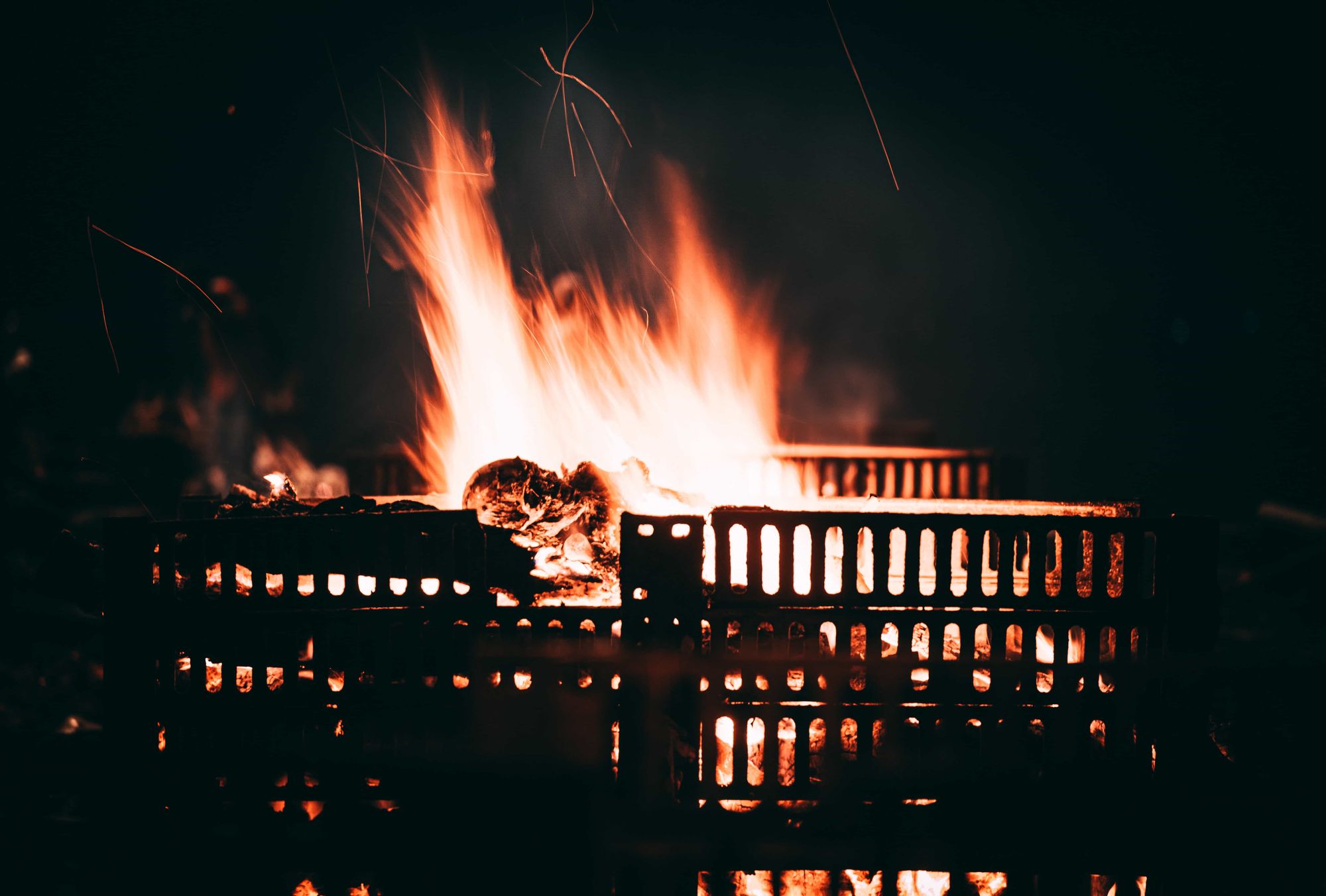
Burning body at the cremation grounds of Manikarnika Ghat, Varanassi (India)
Memento mori (Latin for 'remember that you [have to] die')
Part two of a three part series on the Cremation grounds of Varanassi written together with Jordan De Lupis. For part one about Varanassi itself, click this link. For part three about the Cannibal monks - click this link.
In part one we discussed the religious importance of Varanassi, located at the Holy Ganges river, it is both a place to die for Hindus as it is believed that performing the last rites at Manikarnika Ghat can provide the souls with Moksha, or liberation from the cycle of death and rebirth.
Women aren’t officially allowed here, considered to be a 'happy' event, crying is forbidden.

One of the 84 ghats is Manikarnika ghat - the eternal burning grounds of Varanassi. Around 100 bodies are burned using wood every day at this site. Not everyone is allowed to be burned at the numerous cremation sights throughout the country, and pregnant women, children as well as holy men and poor families who can’t afford the cost [~250$] are just thrown into the Ganges river - more on that later.
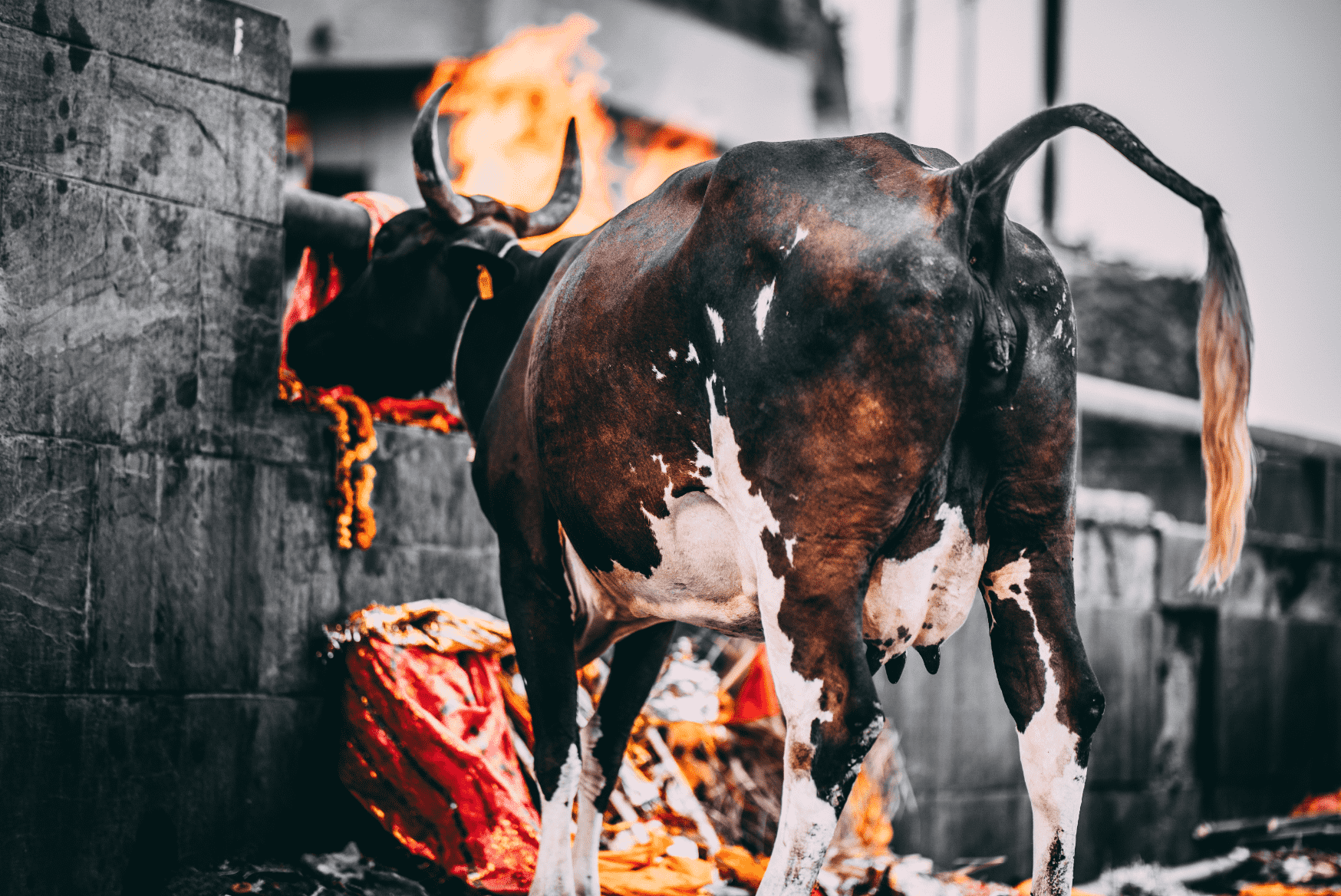
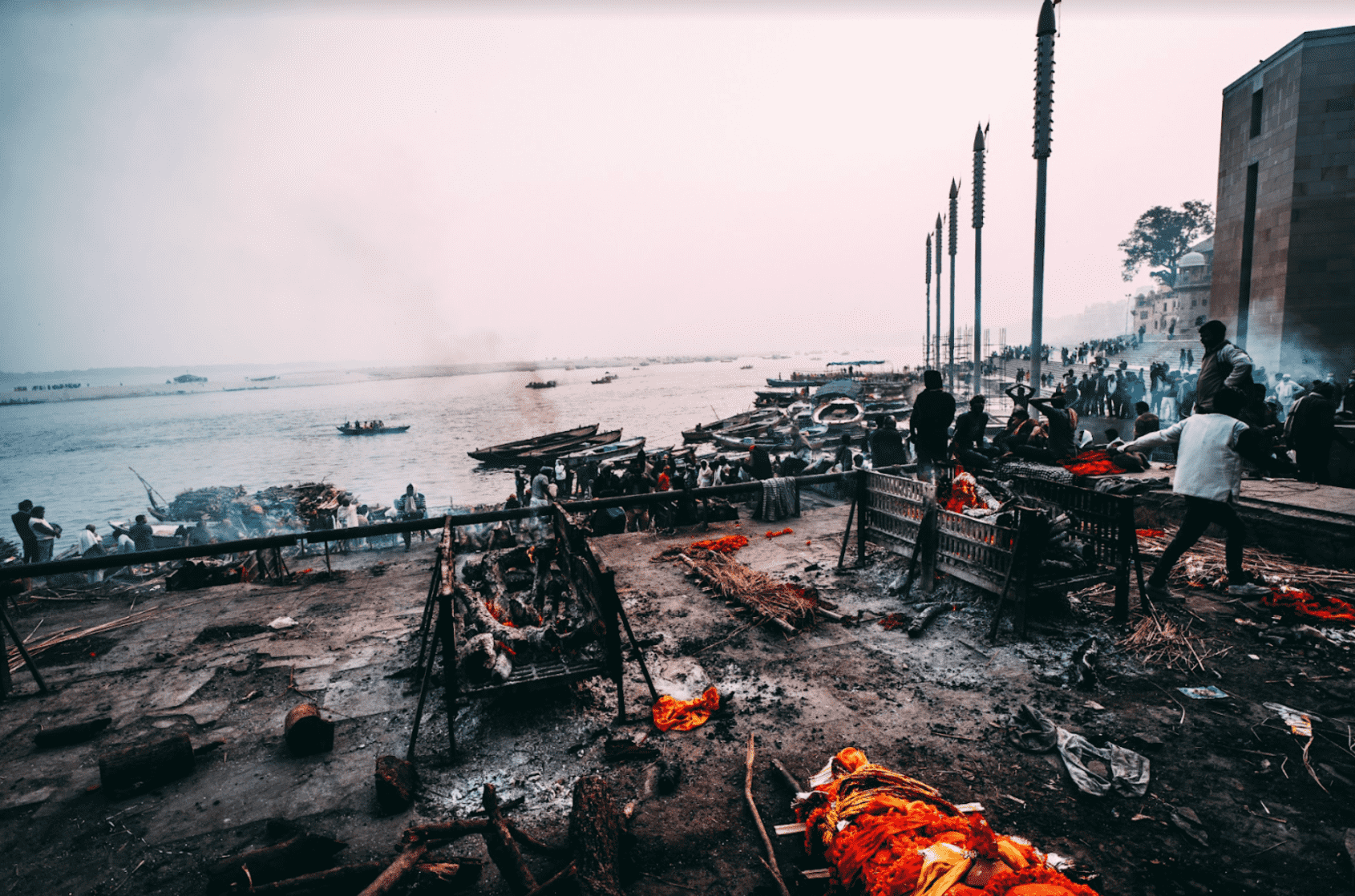
Some would call the cremation grounds a dirty mess to avoid at all cost, but others find it to be the worlds holiest place. Maybe both are true.

The 'eternal fires', some call it. Like all fires, they start with fuel - a lot of it

Its getting shipped here with boats
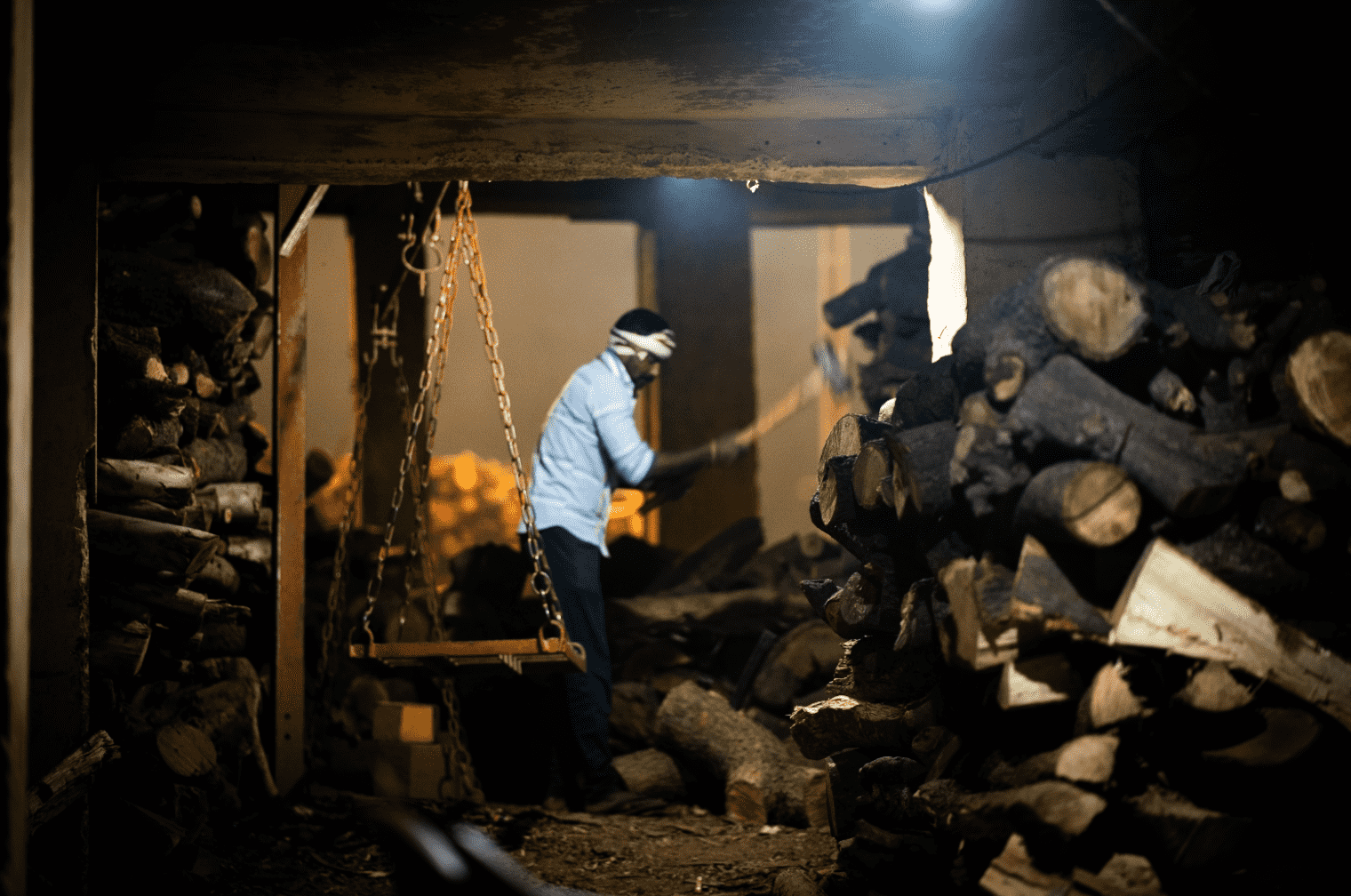
Organised and chopped up
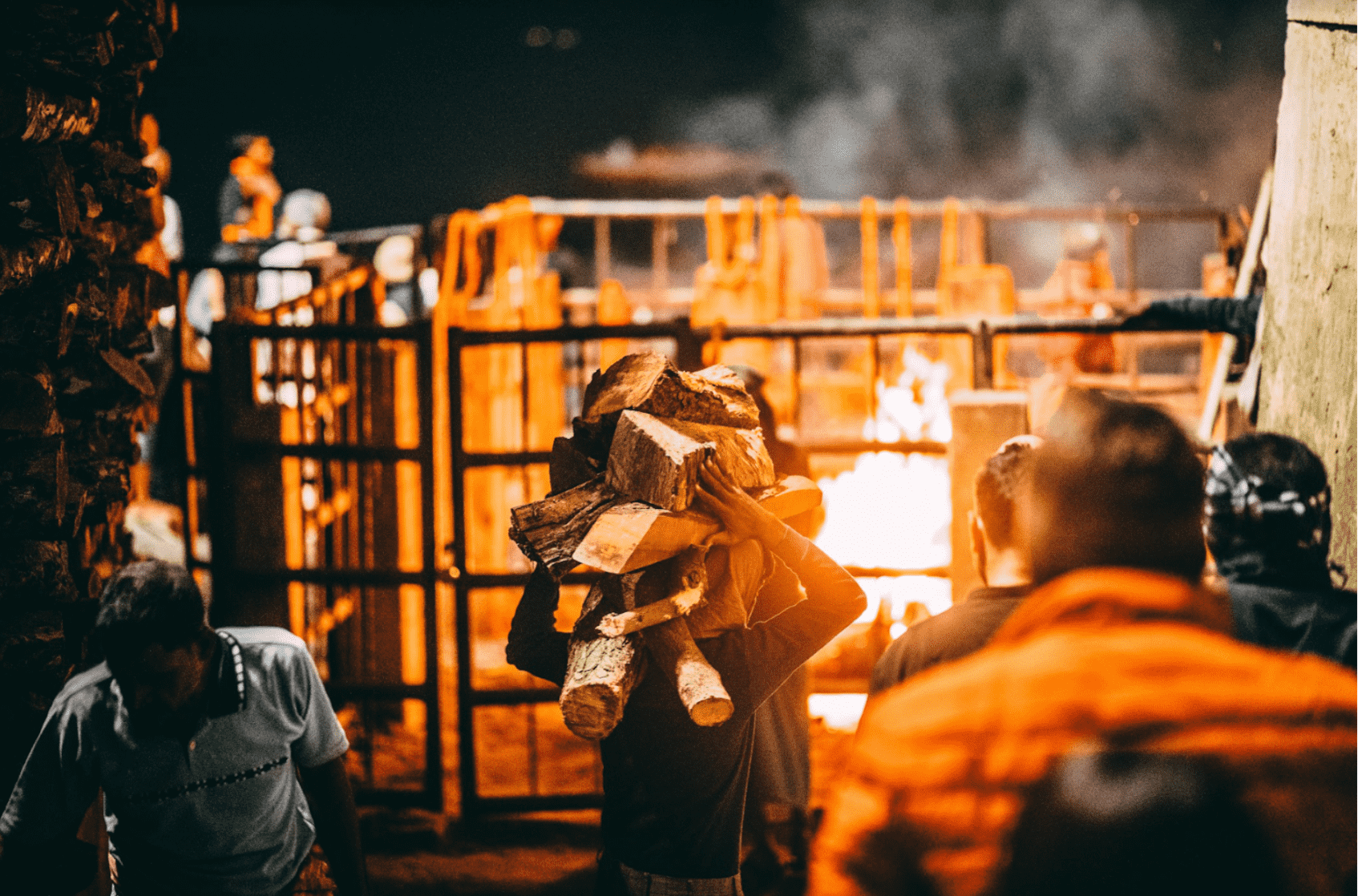
Then carries by hand to the cremation ground
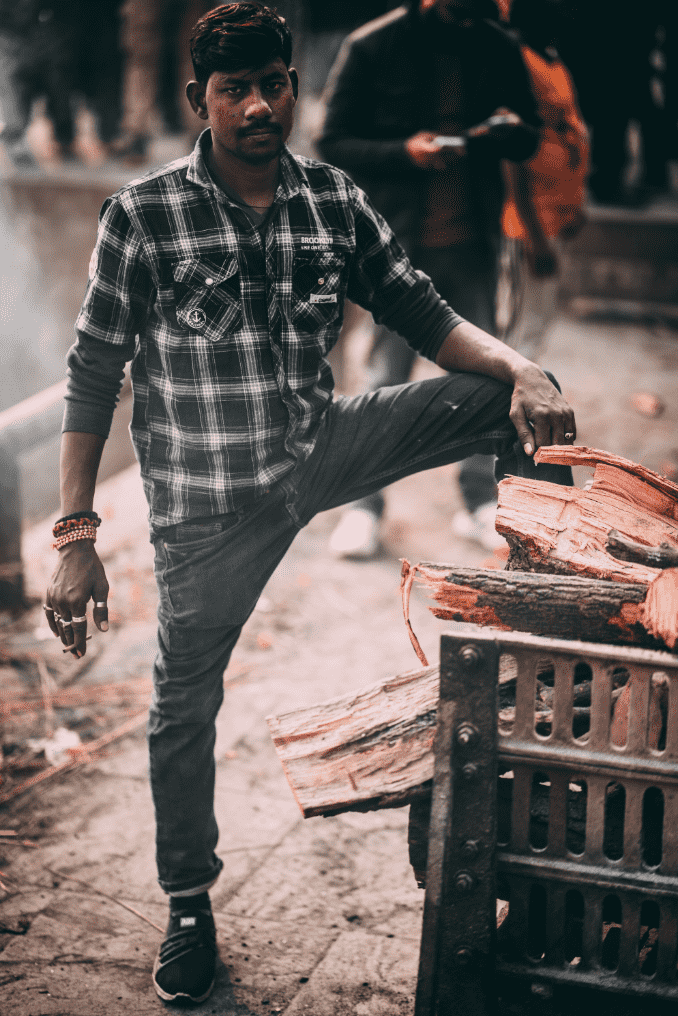
A lot of the workers here are from lower castes, and smoke weed and drink alcohol to get through the day. It must be gruesome to have been doing this your entire life, like your father and his father as well as any children you'll have.
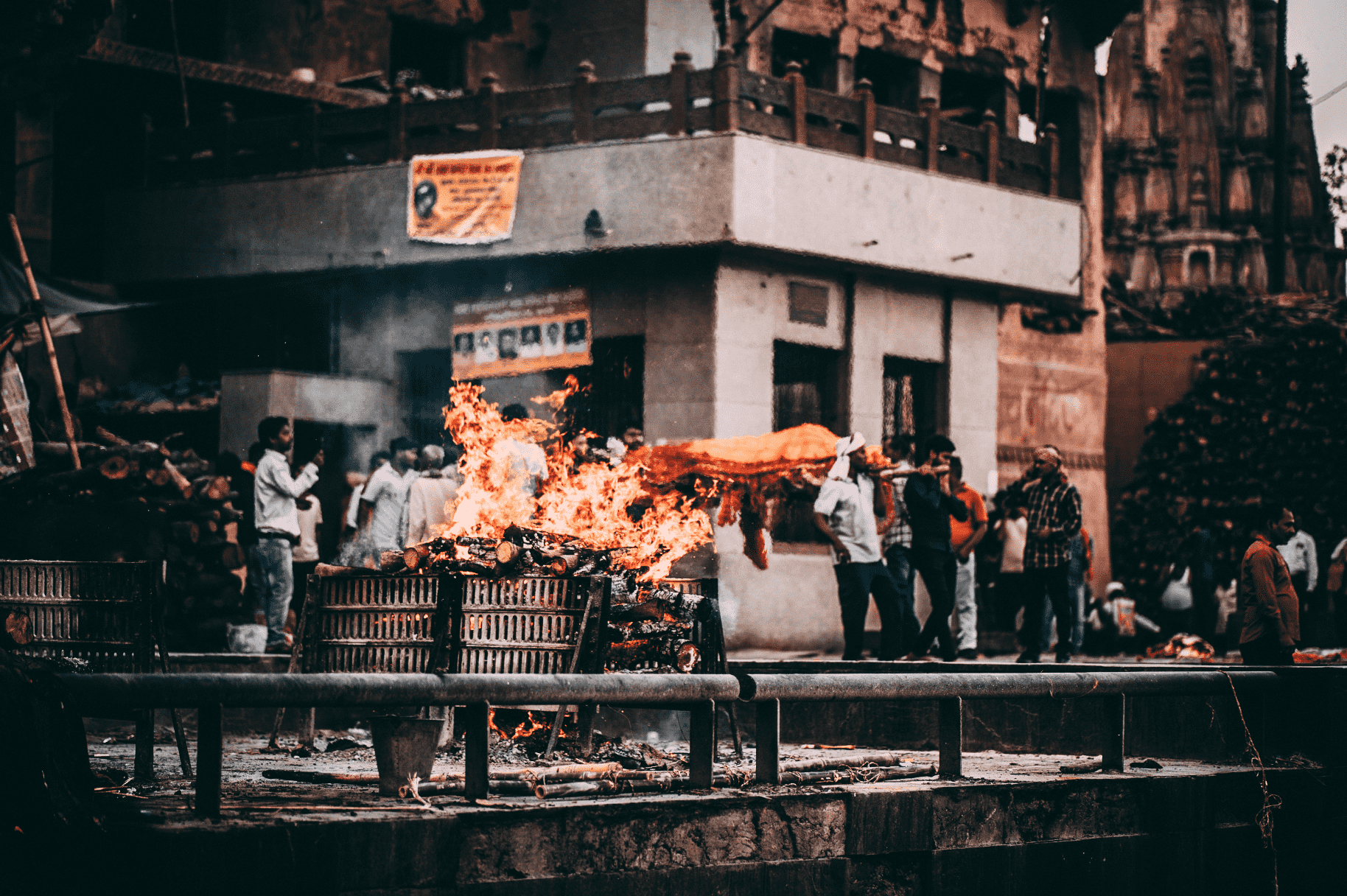
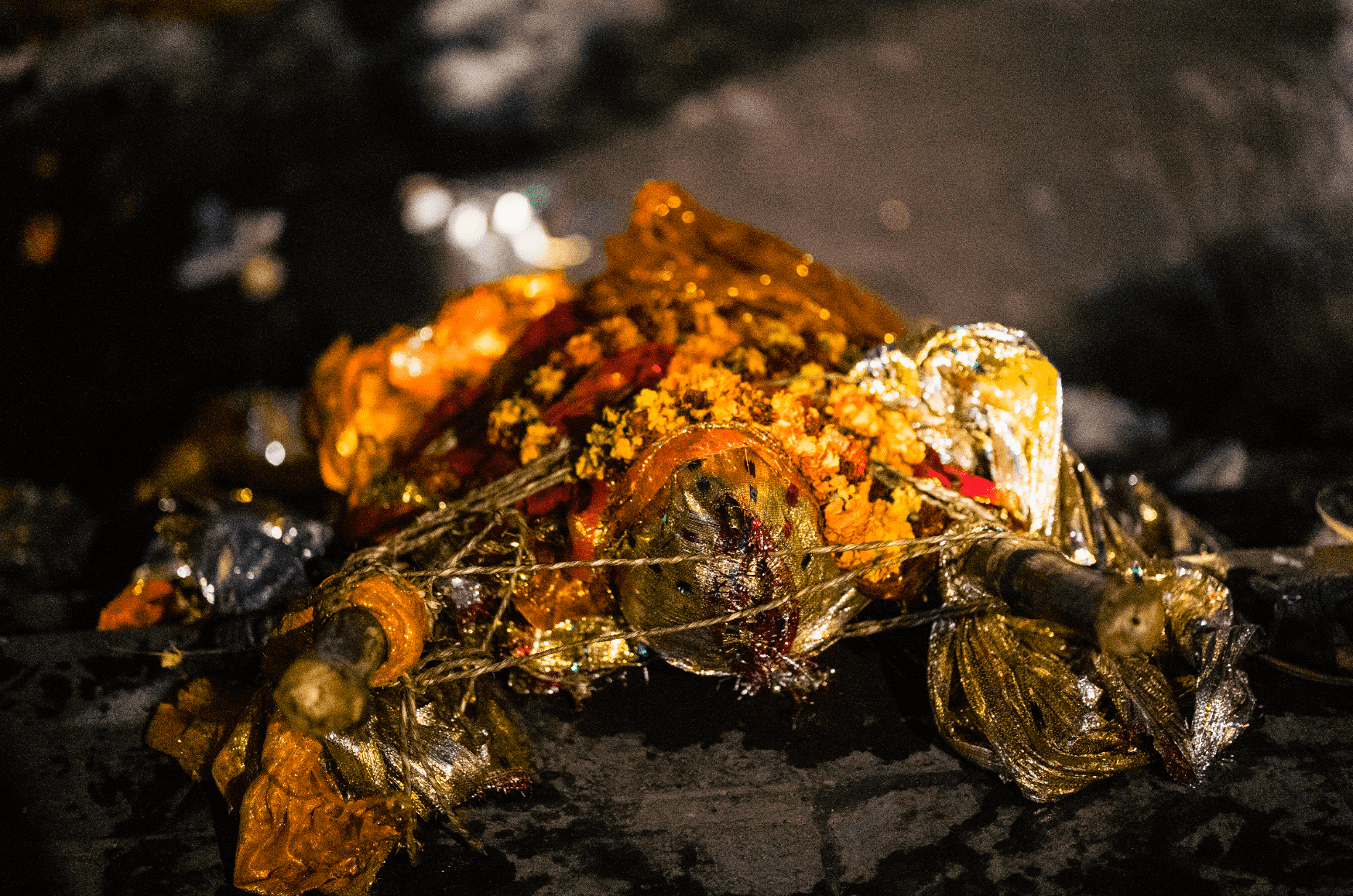
The body is covered in cloth and brought to the river for cleansing
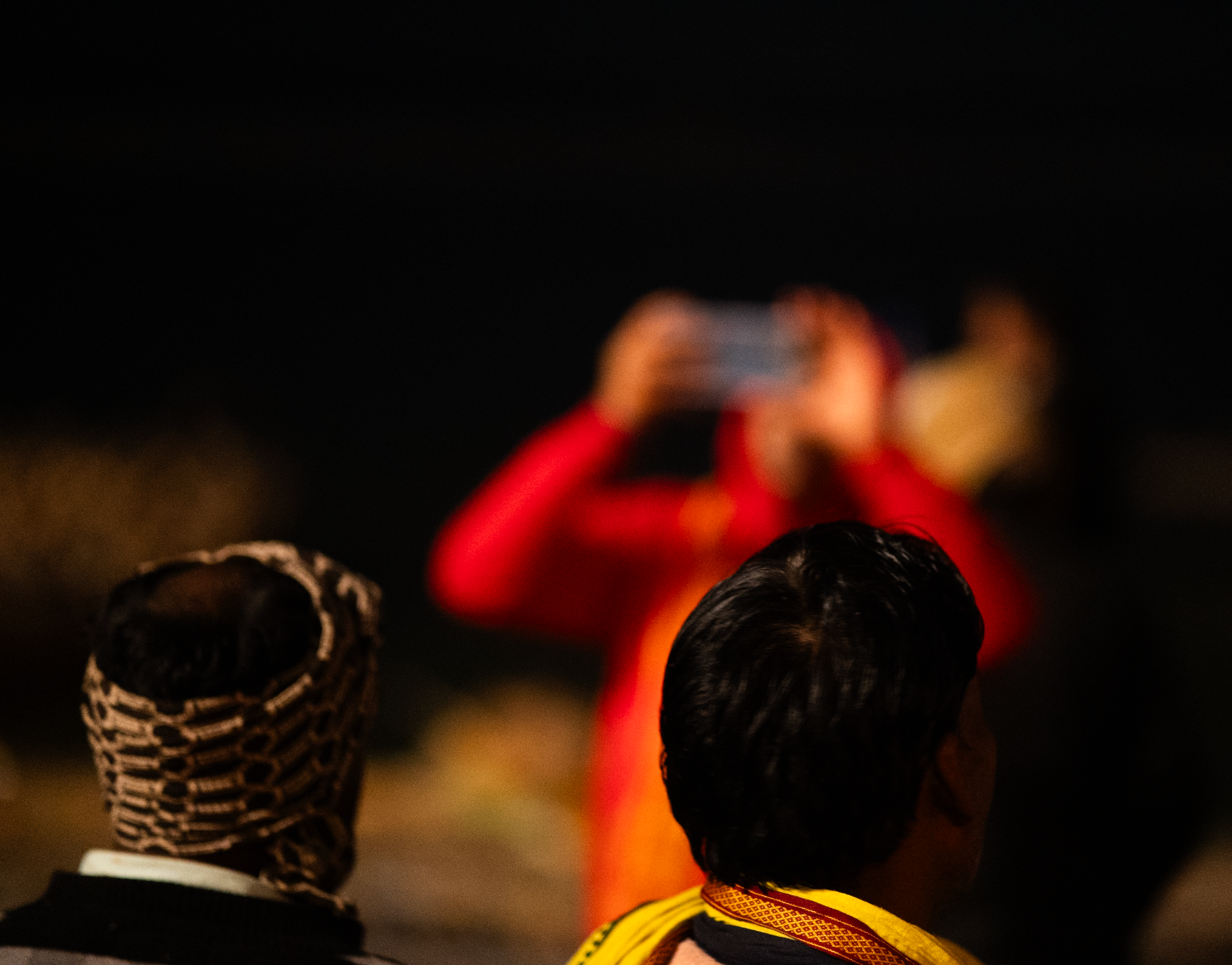
People say goodbye in different ways throughout different cultures. I found these gentlemen to be taking selfies with their dead mother.
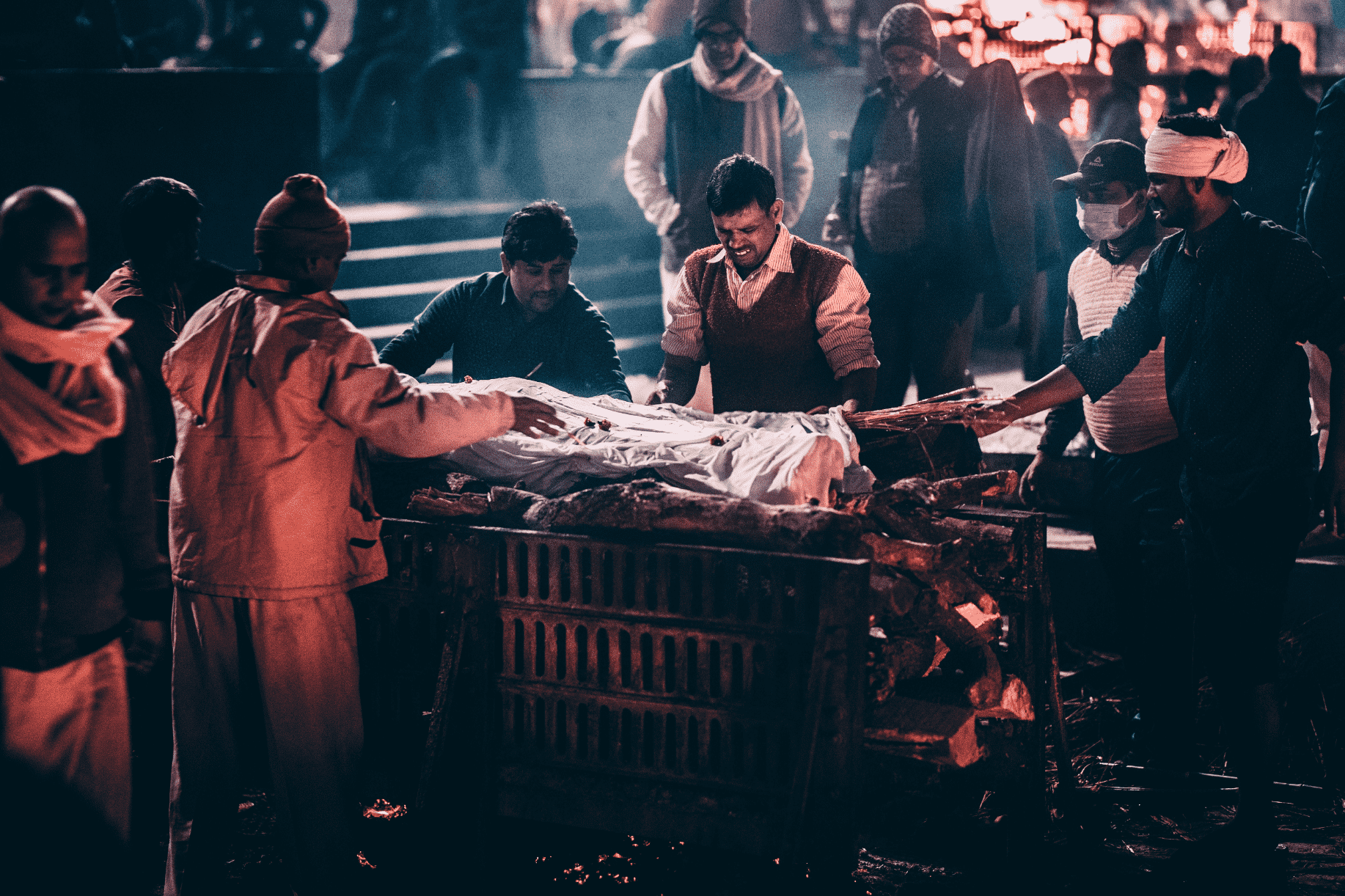
Then carried to the fireplace and covered in more wood - if the family can afford it...

The cow is the holiest animal in Hinduism, and many of them freely roam around the site
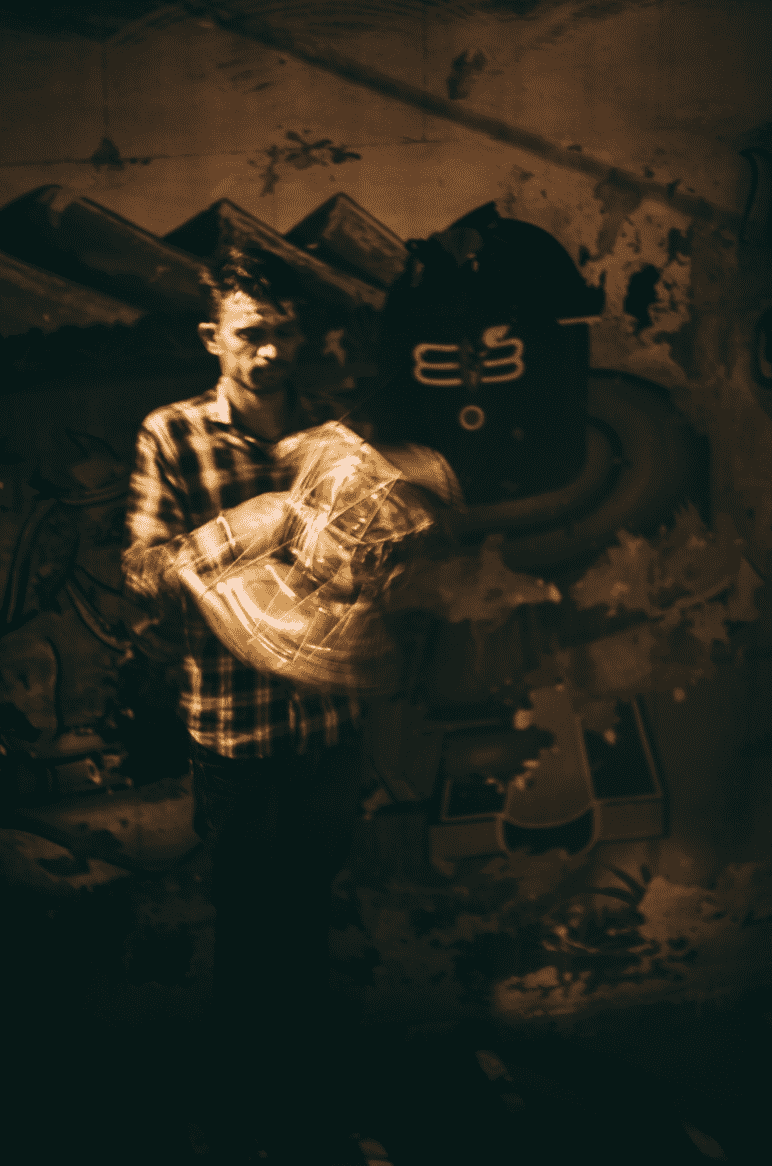
Double drums are played throughout the ceremony
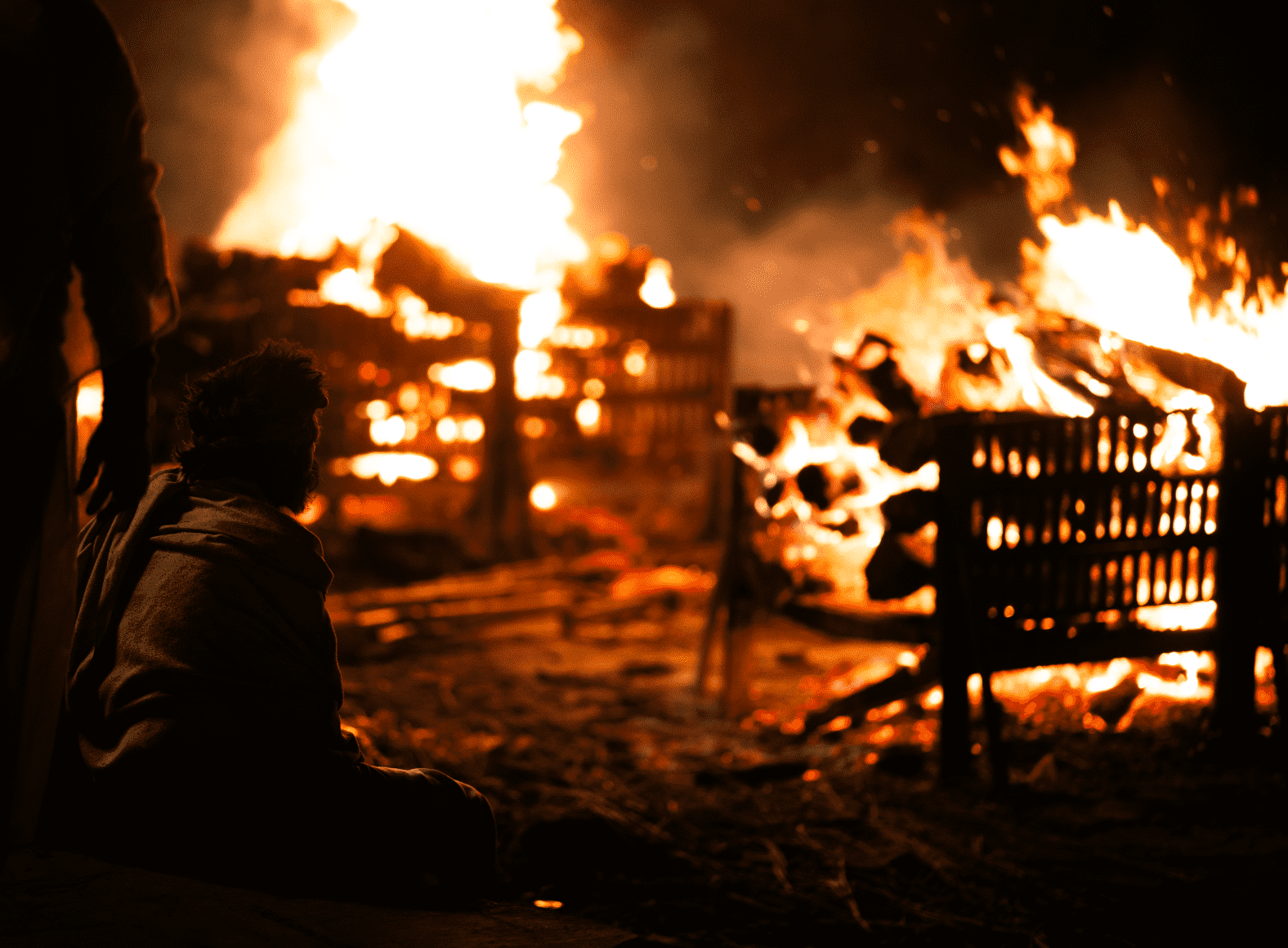
And then the fires are lit!
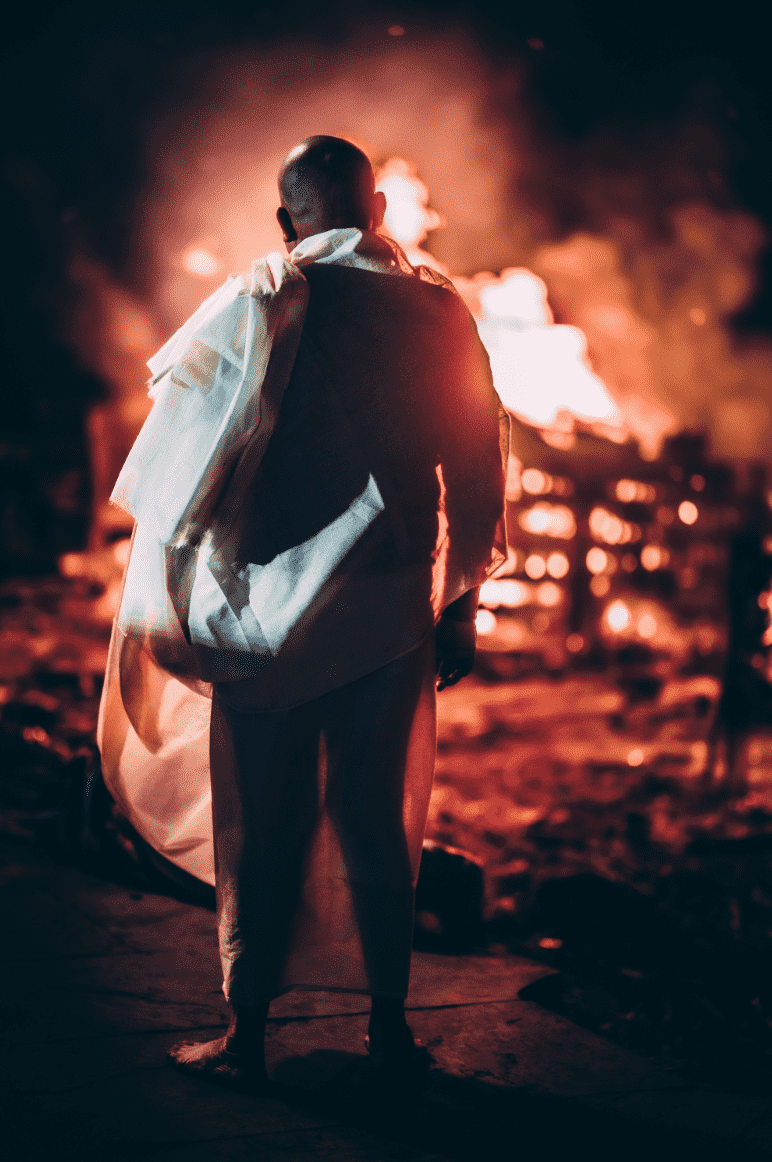
This young man watches the body of his mother burn
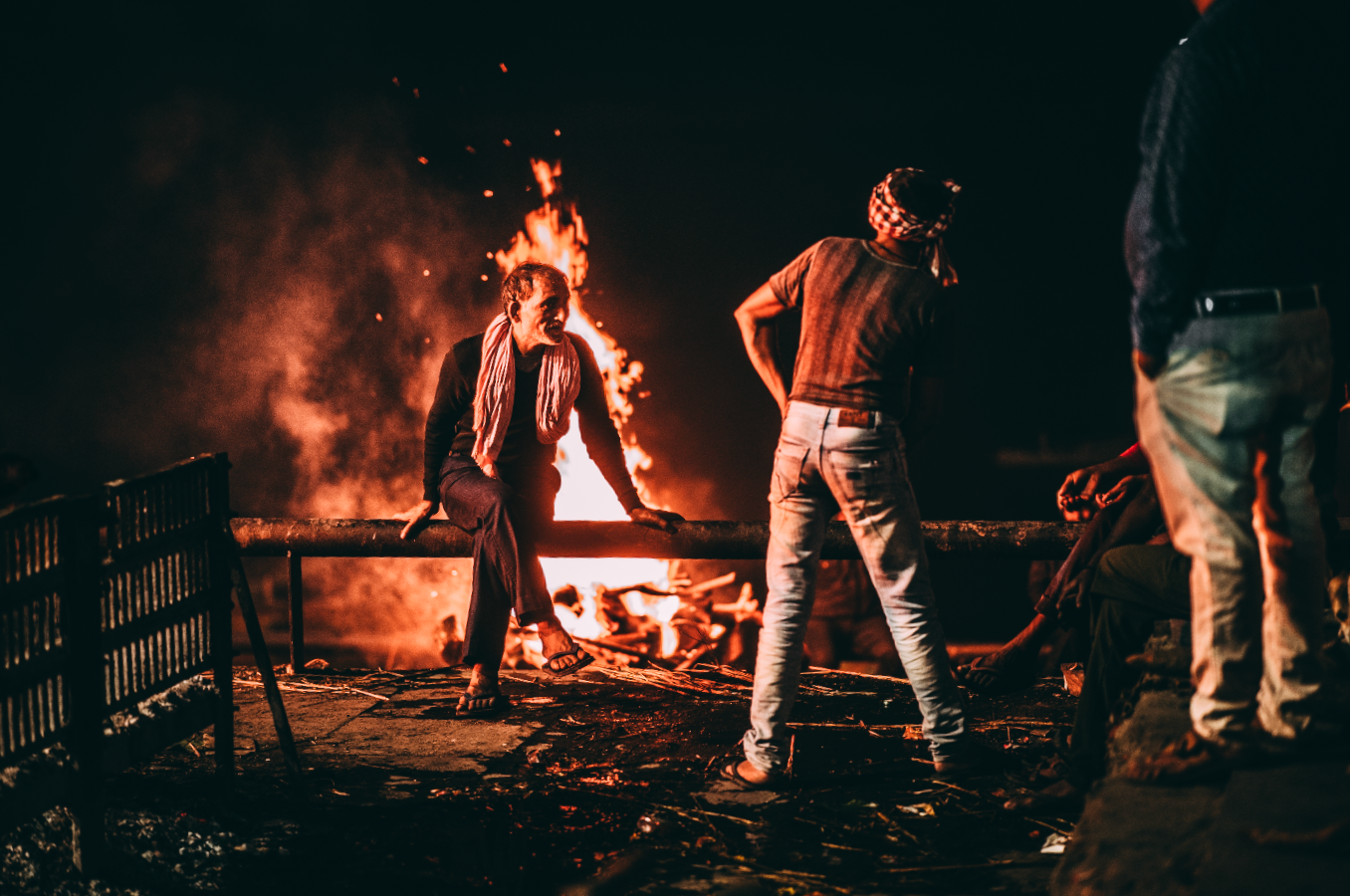
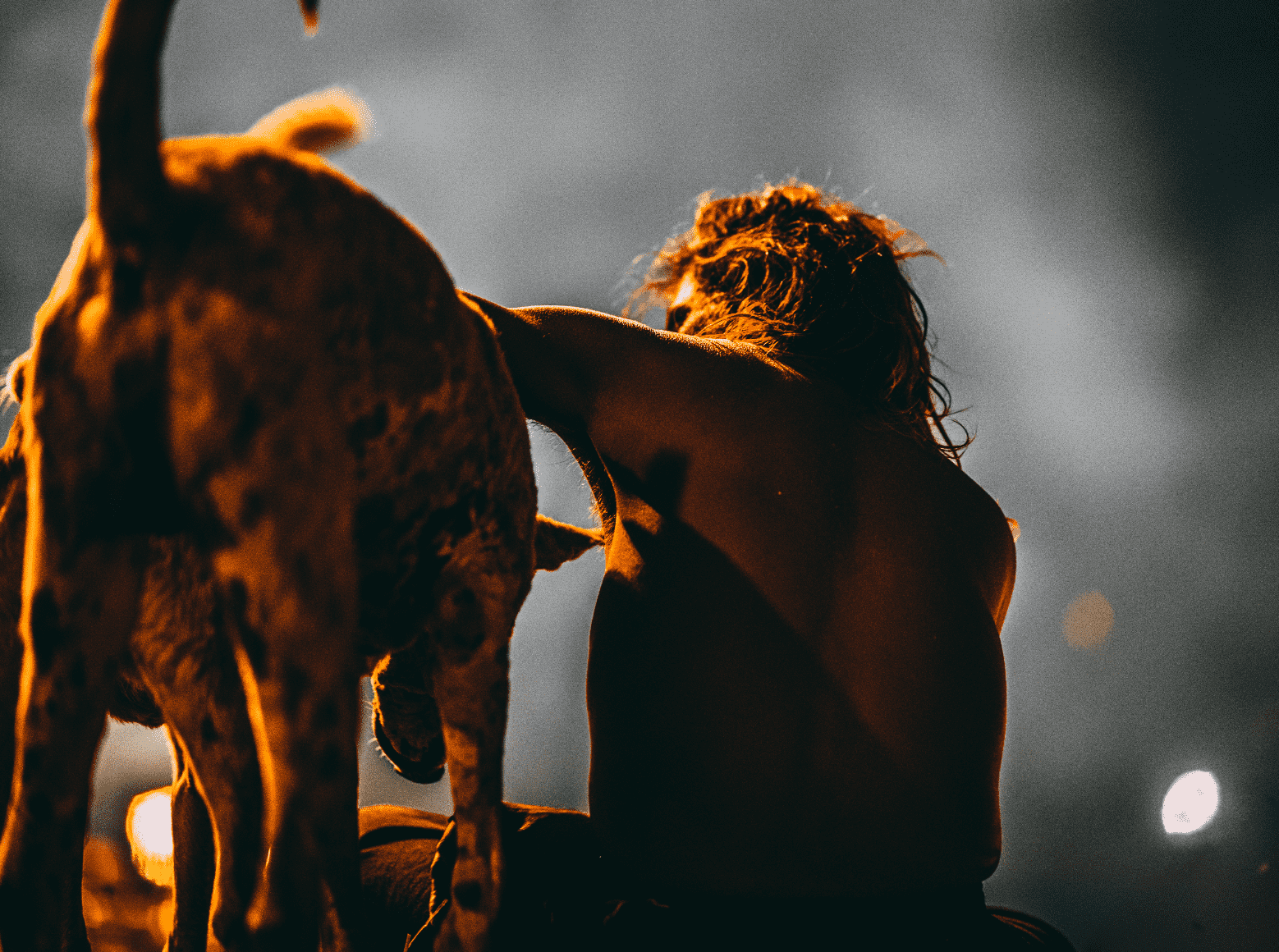
The fires can get cozy sometimes and people stare at them
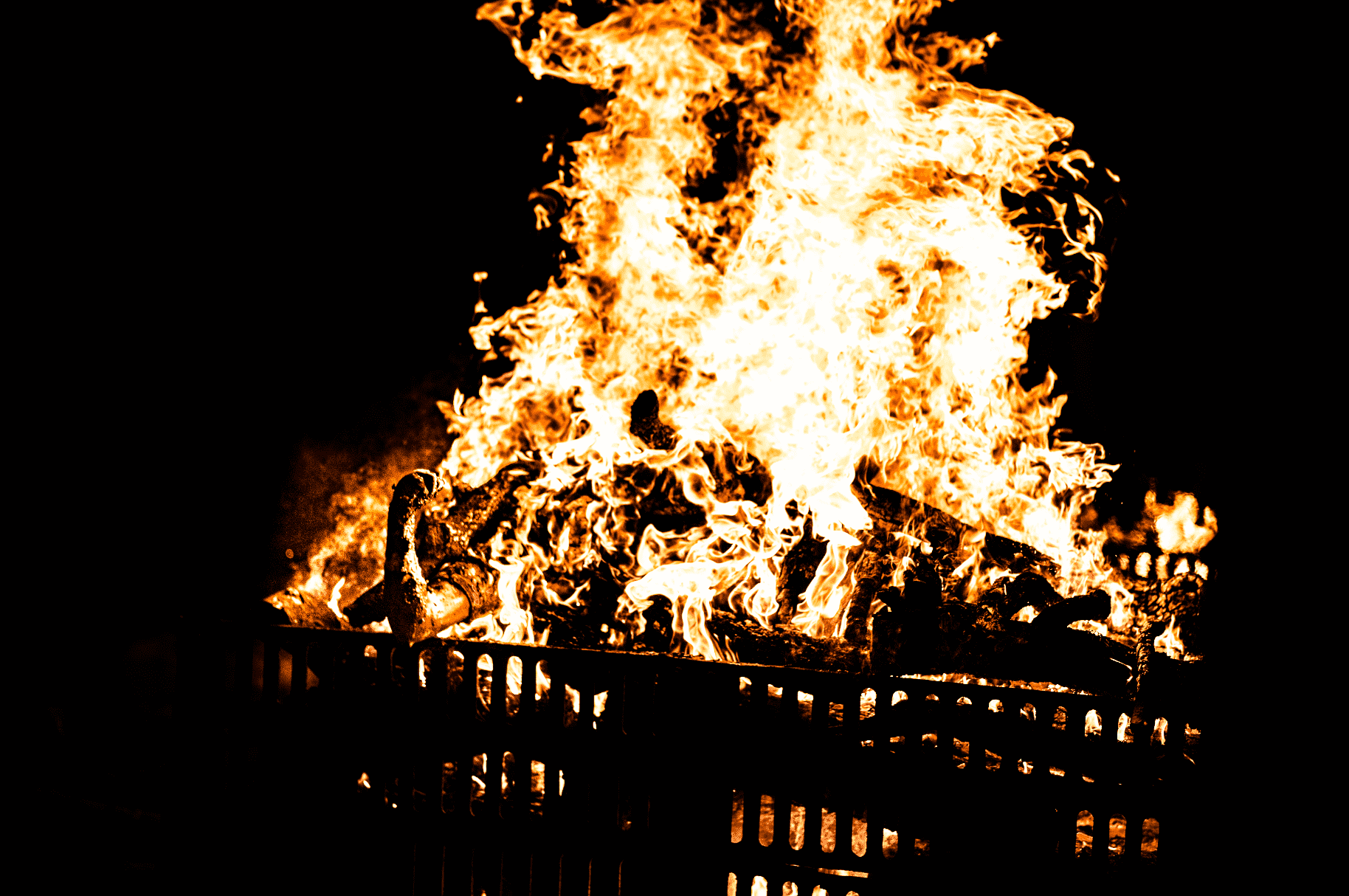

Sometimes the family didn't buy enough wood, or the intoxicated workers didn't do a proper job, and parts of the body become visible.
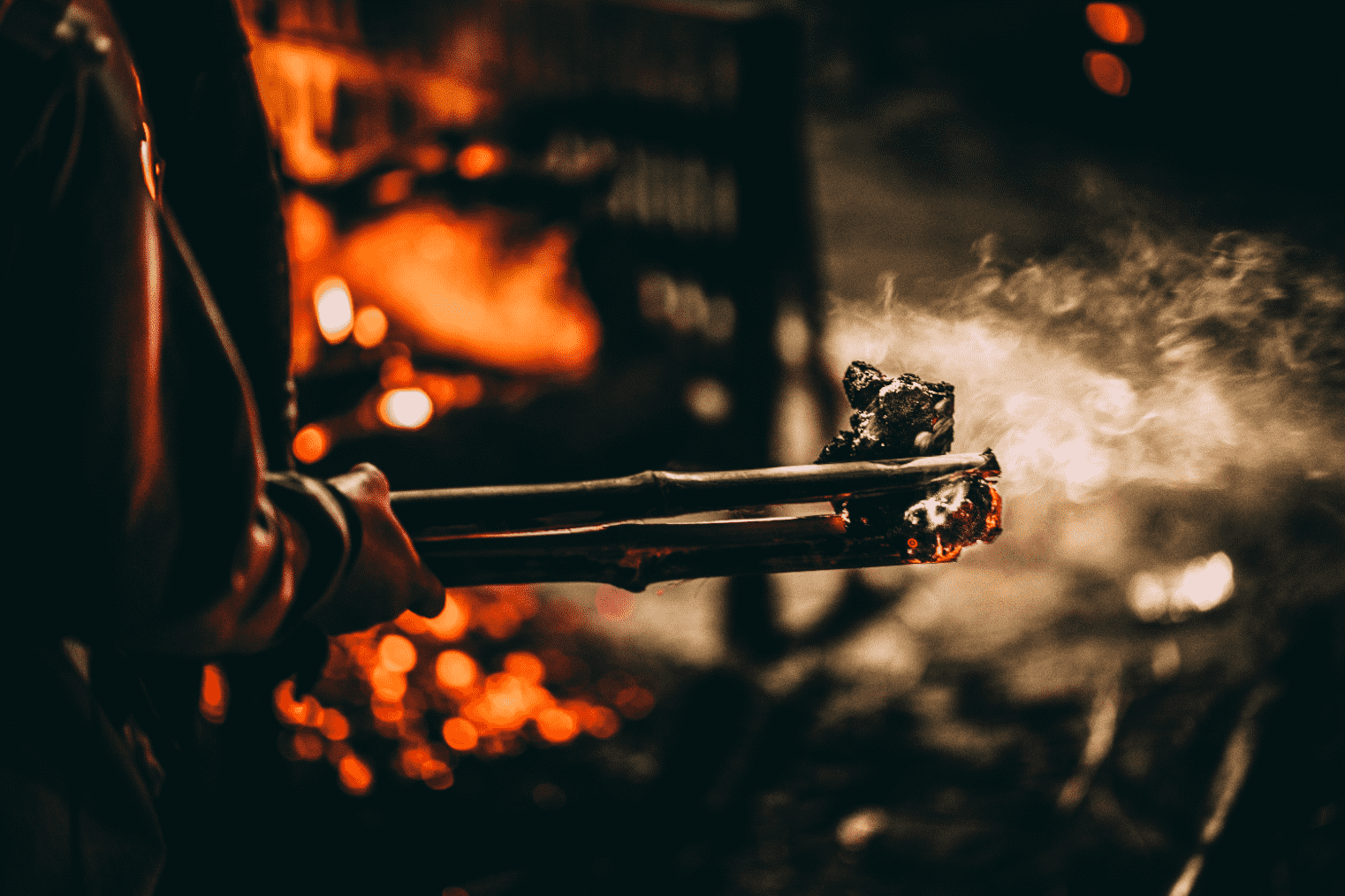
Part of the human remains are brought to the Ganges river for a second cleansing of some sort
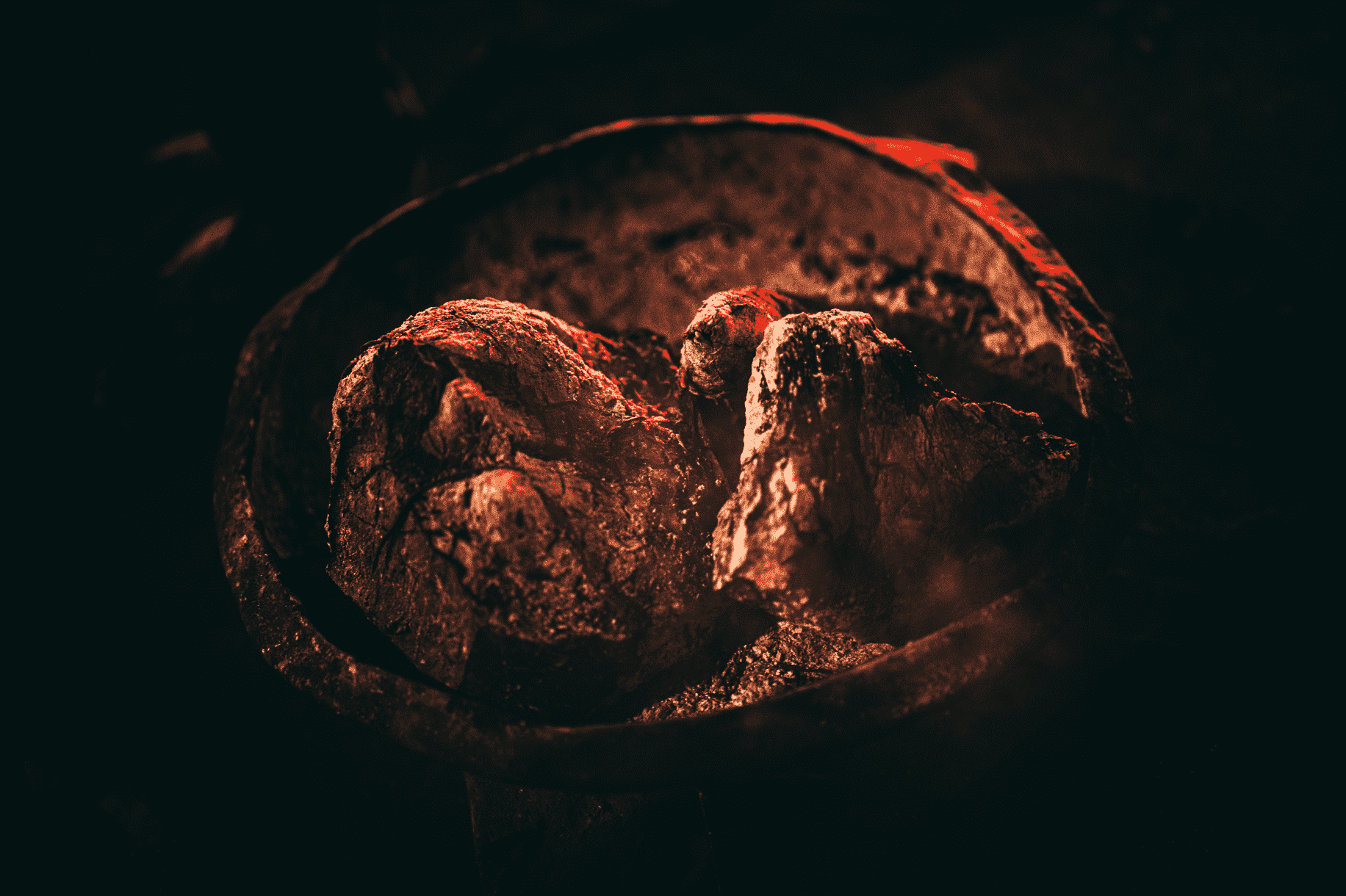
Other human remains are collected in a tub, to be put in an urn
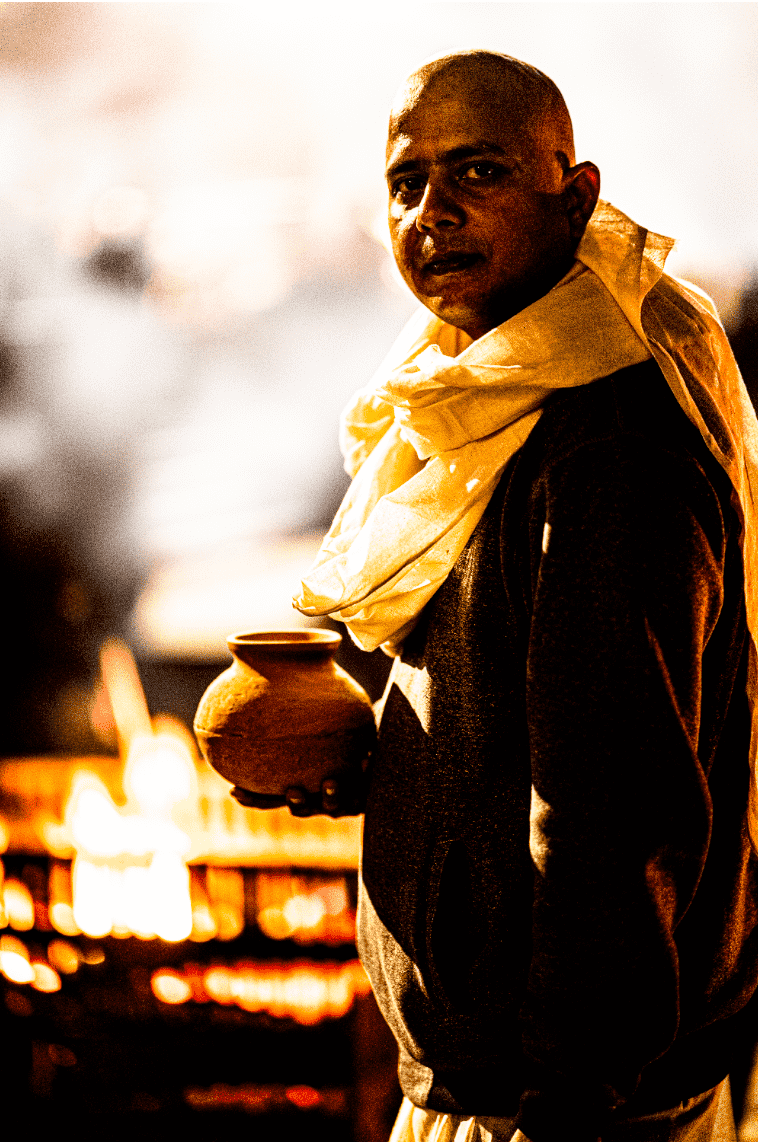
A civilian with a freshly shaved head holds the ashes of his mother
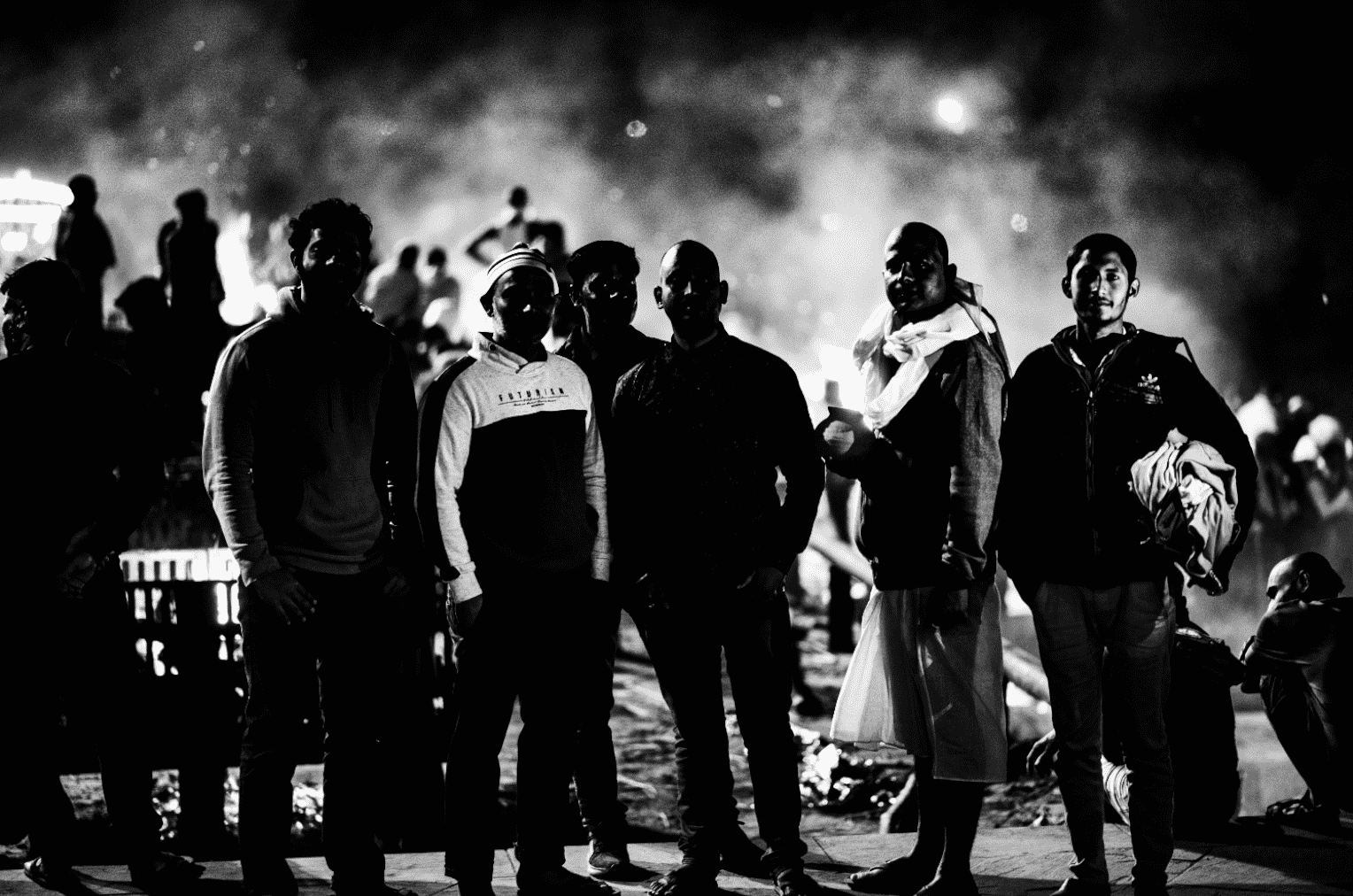
And his family - as you can see, no one is crying and no women are found here
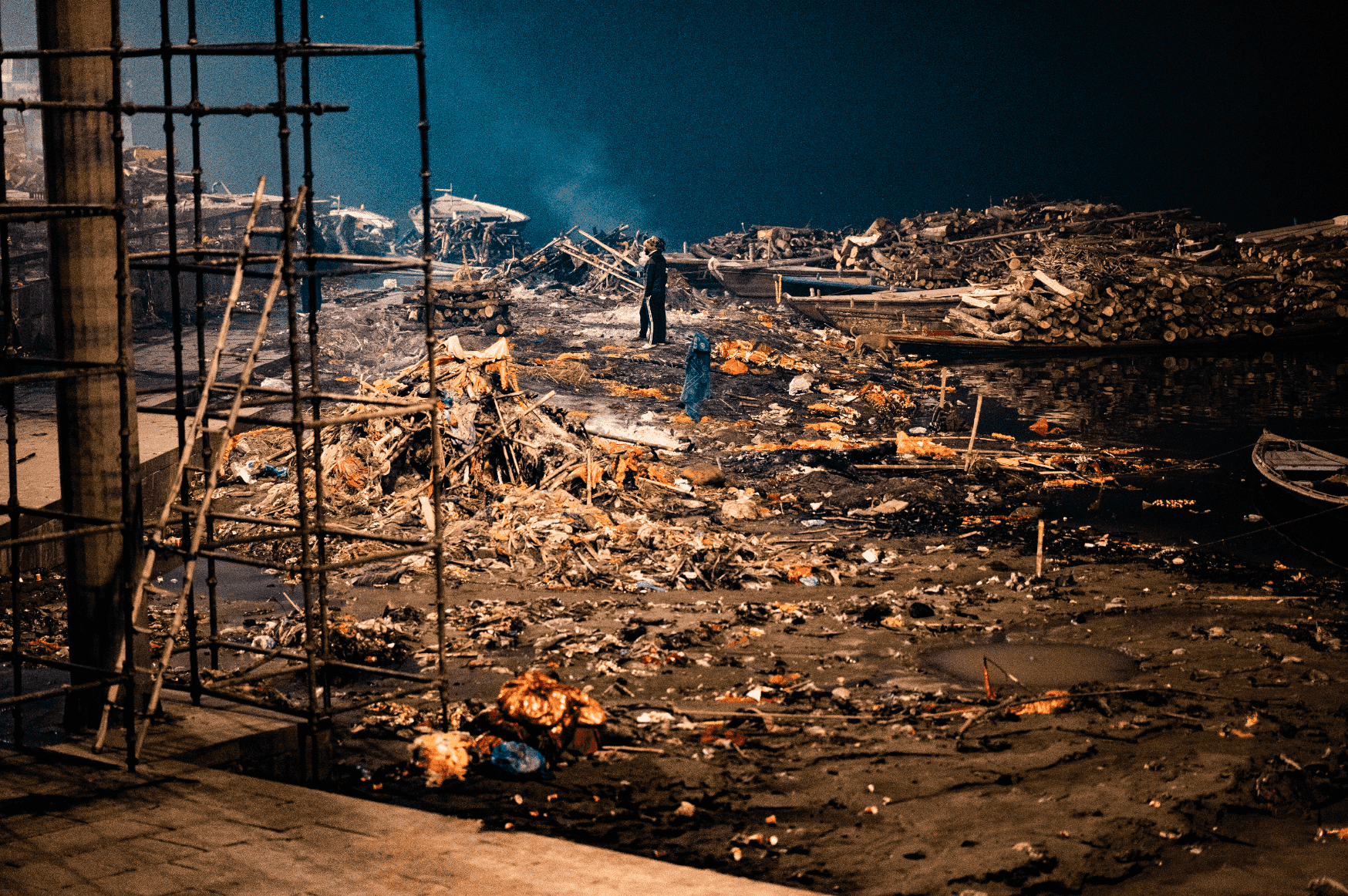
There's a lot of waste involved, and it usually gets disposed into the river
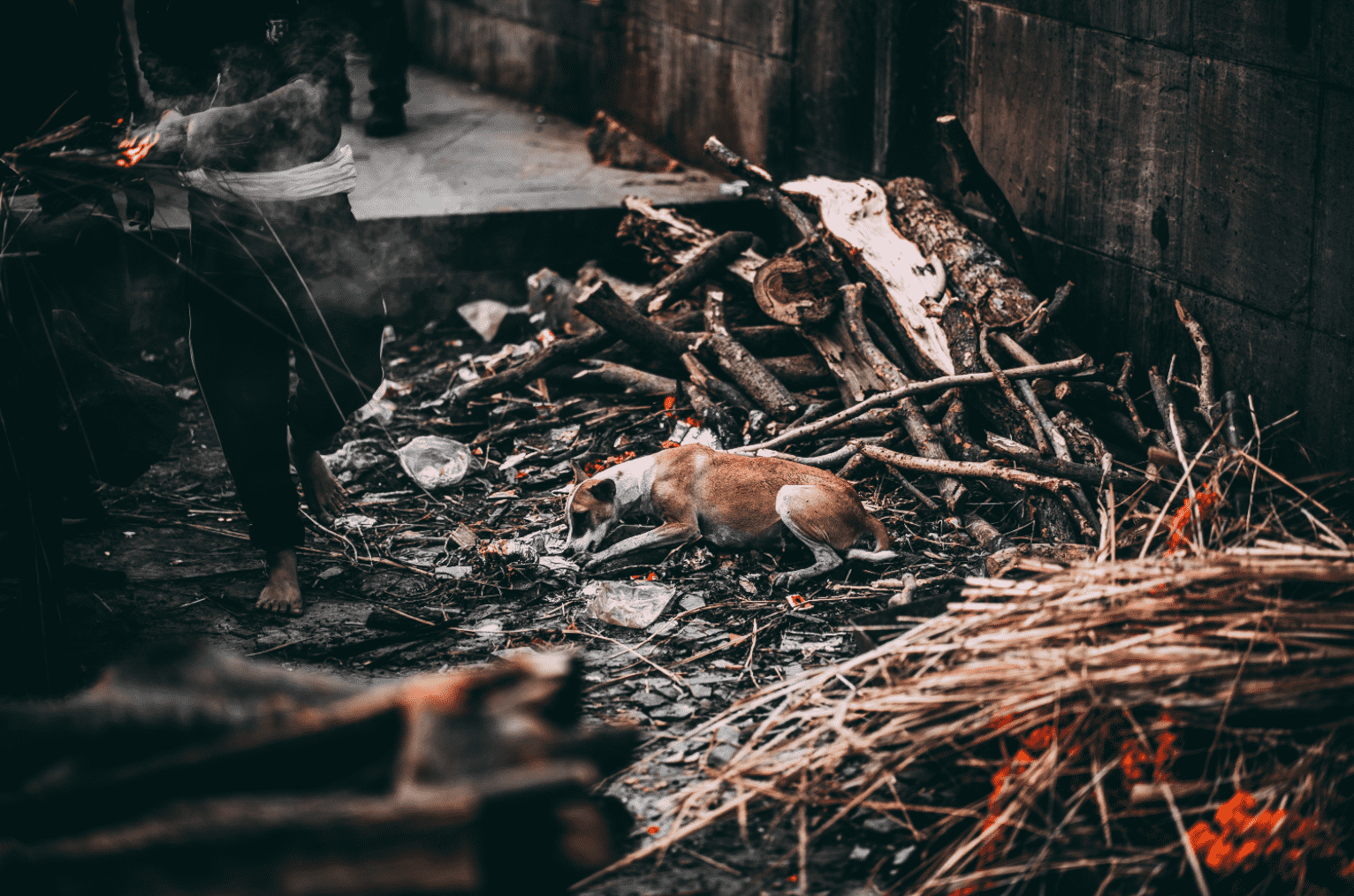
Because this is India, a lot of the fires don't fully burn the human. And the leftovers are usually eaten by dogs or the local cannibals. More about them in the third article.
Aghori funeral
I was lucky enough to be living at Manikarnika Ghat alongside a religious sect called that cannibalism - the Aghoris of which one of their members died at the supposed age of 130. He had come to the Ghat in the last 2 months, knowing he would die and had prepared himself for it.
The ritual there is different, as he is separated from normal society and doesn't have to be prepared for the next cycle of reincarnation.
The body is initially put on ice.
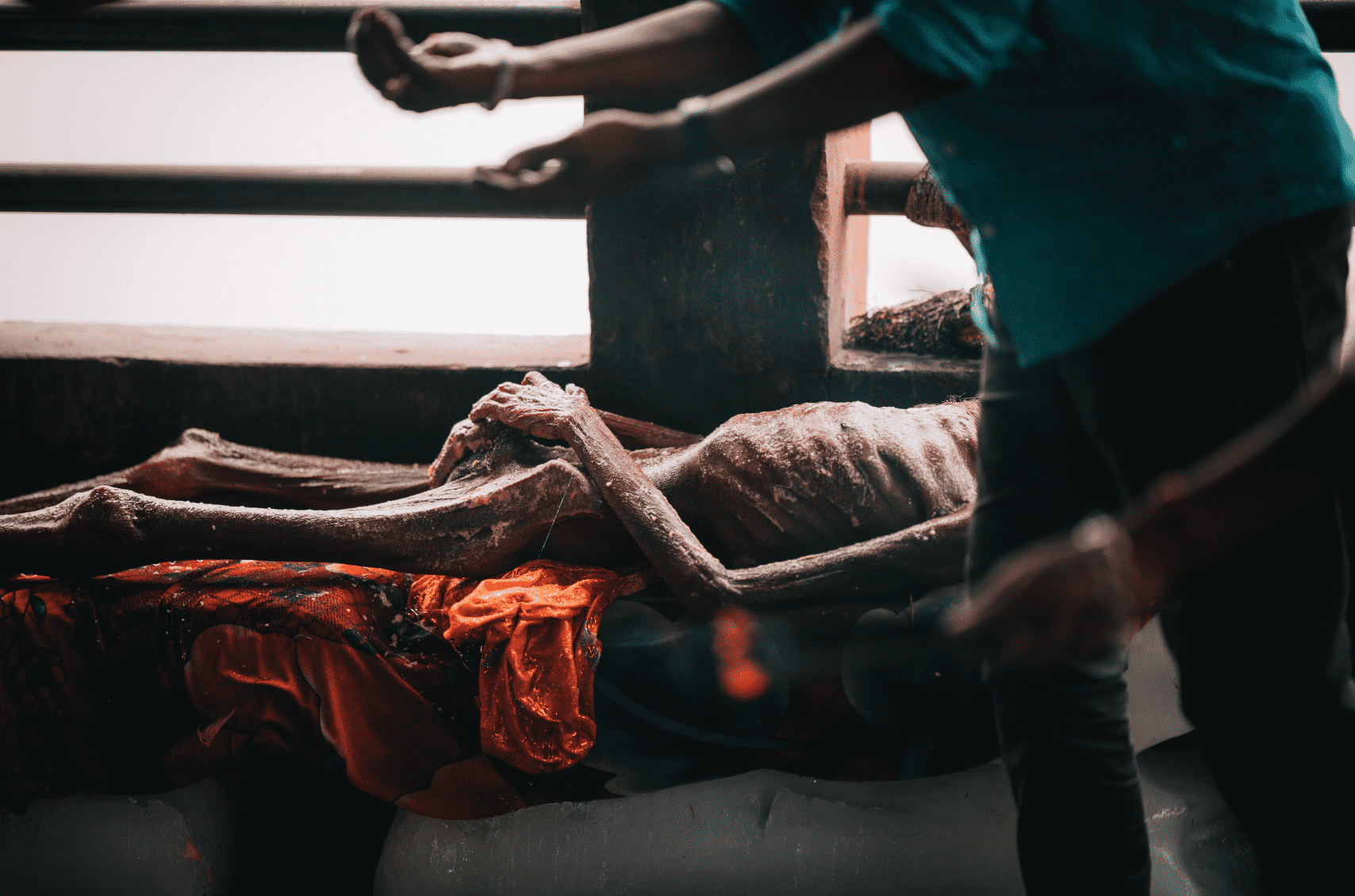

Meanwhile the other Aghori's ferry to the other side of the river where they gather sand for the funeral
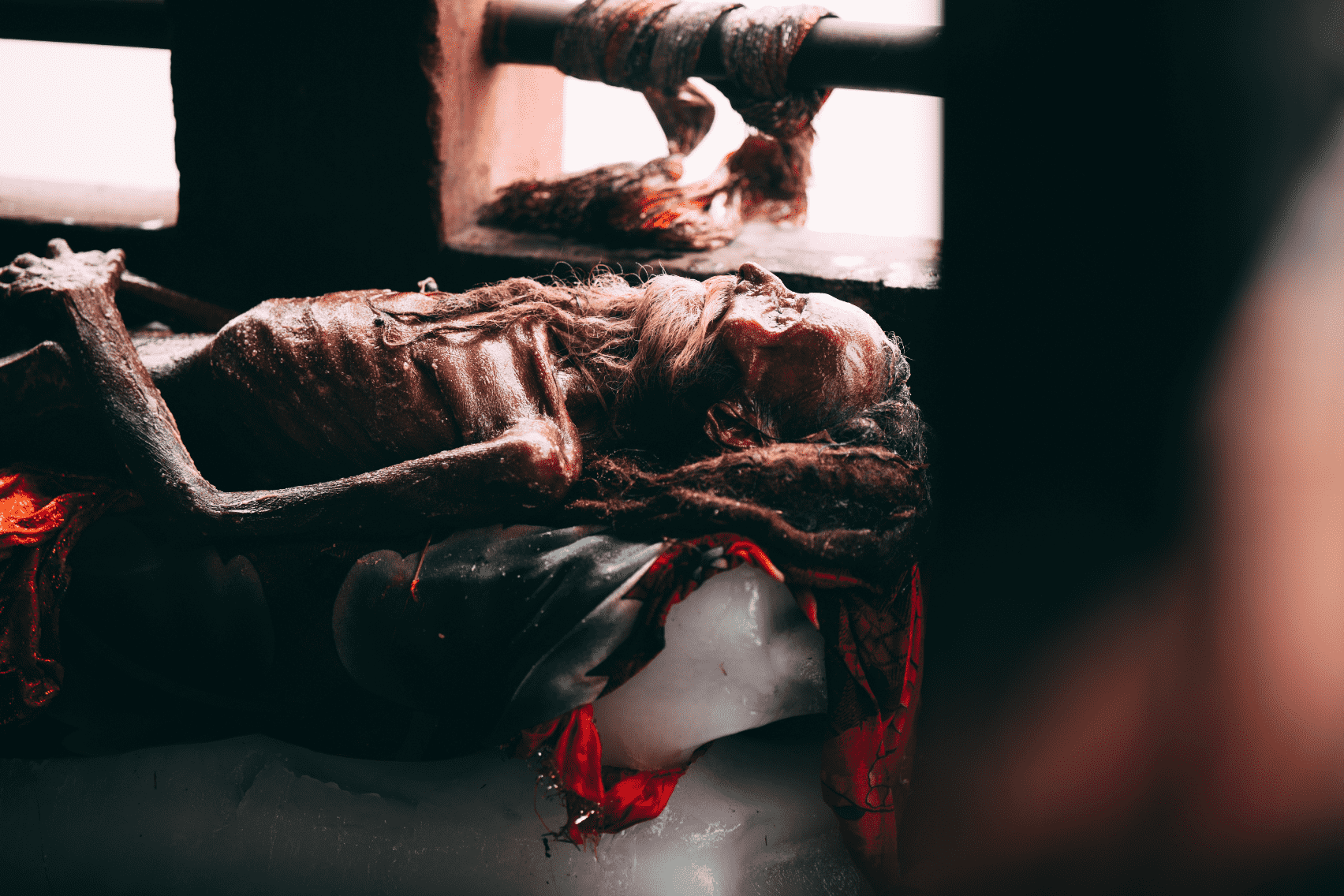
Then smeared in Ghee [clarified butter], which has a religous meaning in Indian culture.
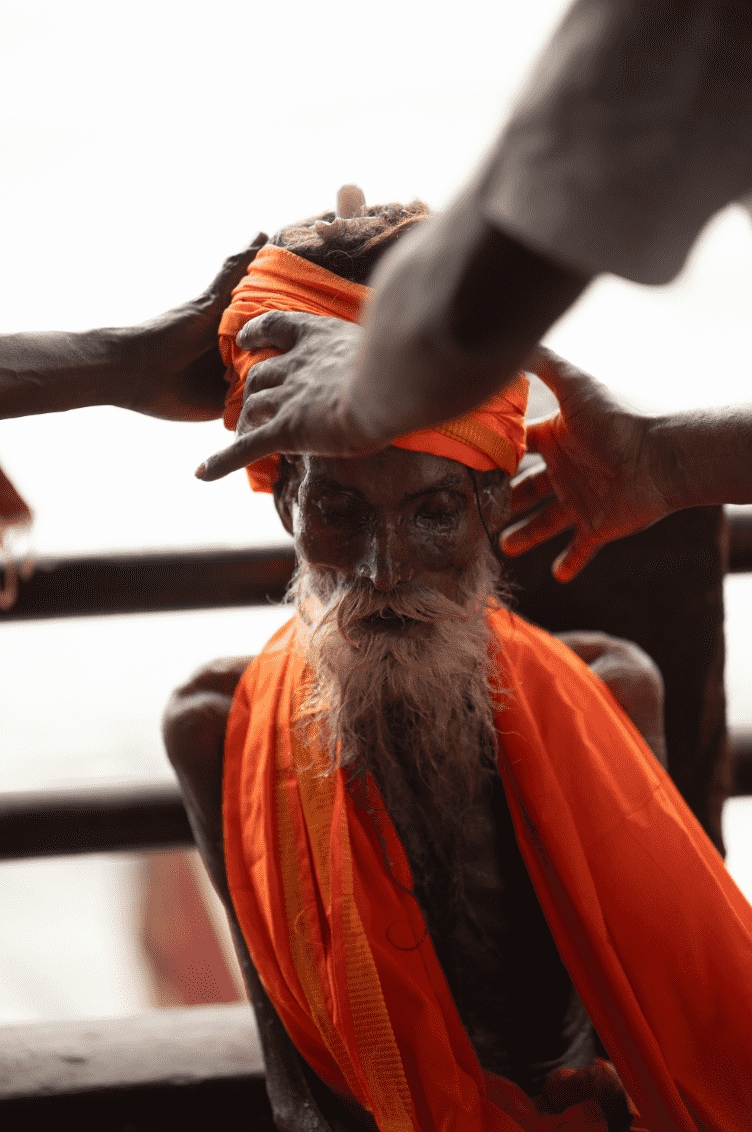
They then dress him up in his daily clothes and other articles, just like in his normal life
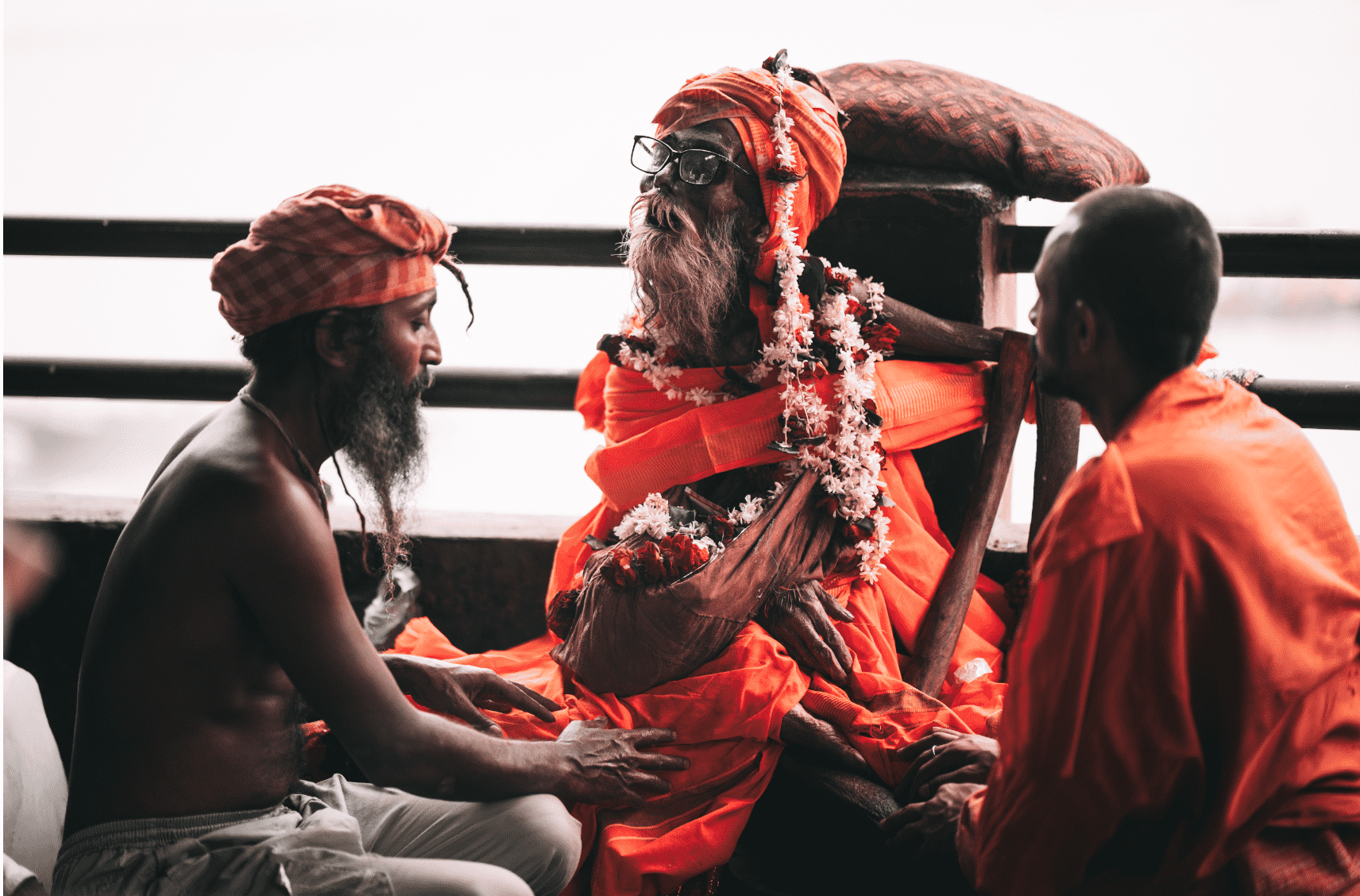
Then he literally gets worshipped and rituals take place with the decorated body.
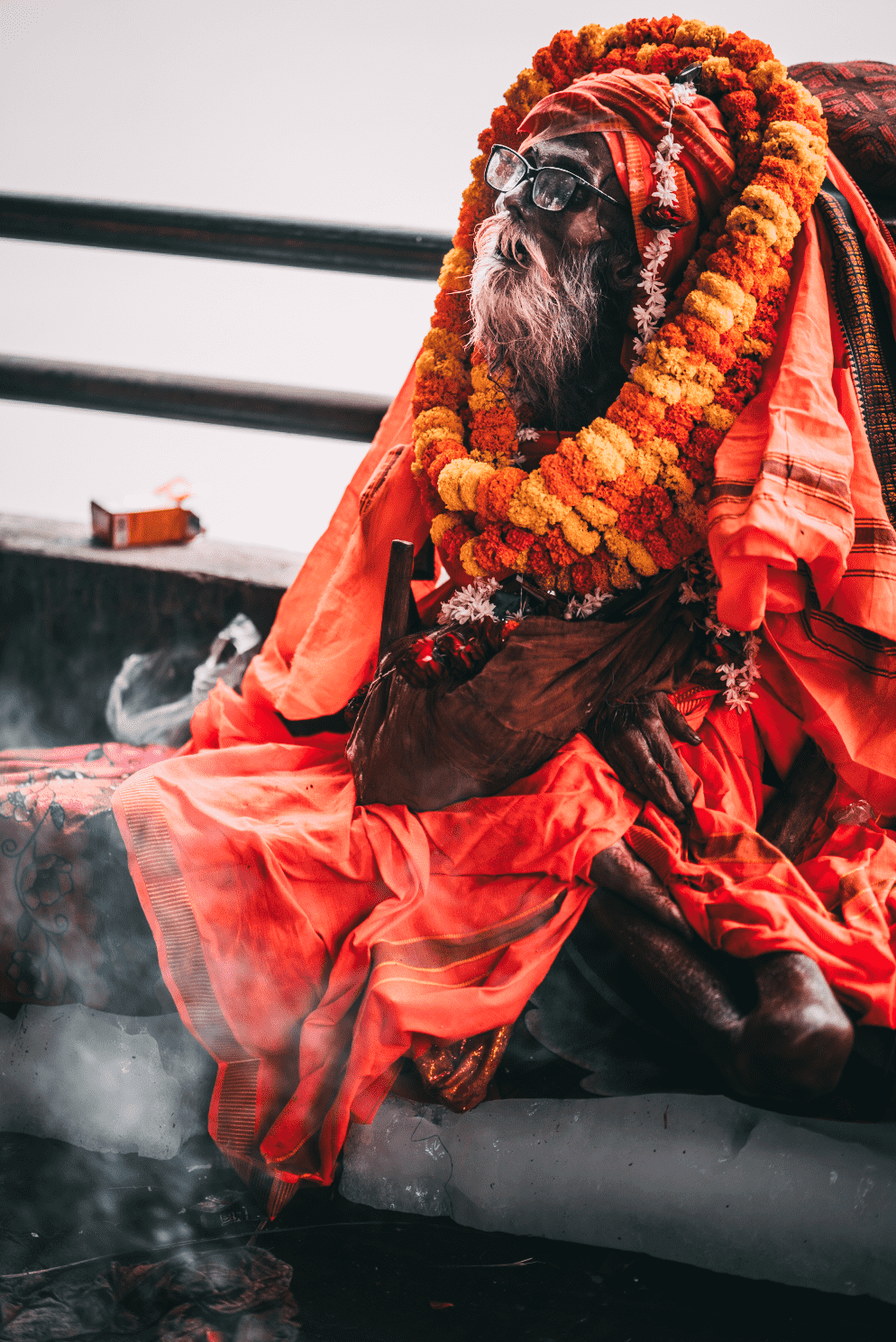
One should know that the location, Varanasi, India, has a tropical climate. And during the funeral it was 42°C along with very high humidity. Its astonishing the body still looked so well preserved.
Vedic shanting is a common ritual as well
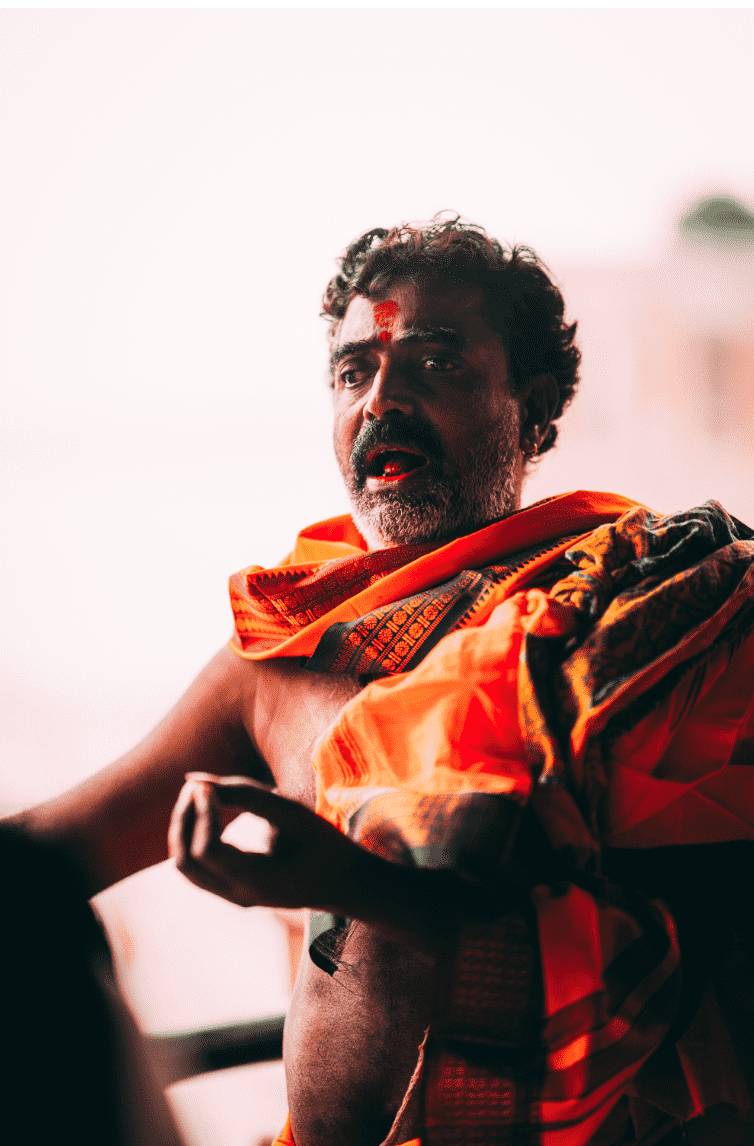
From leftover materials of the cremation ground, a platform is build to carry the body to the water
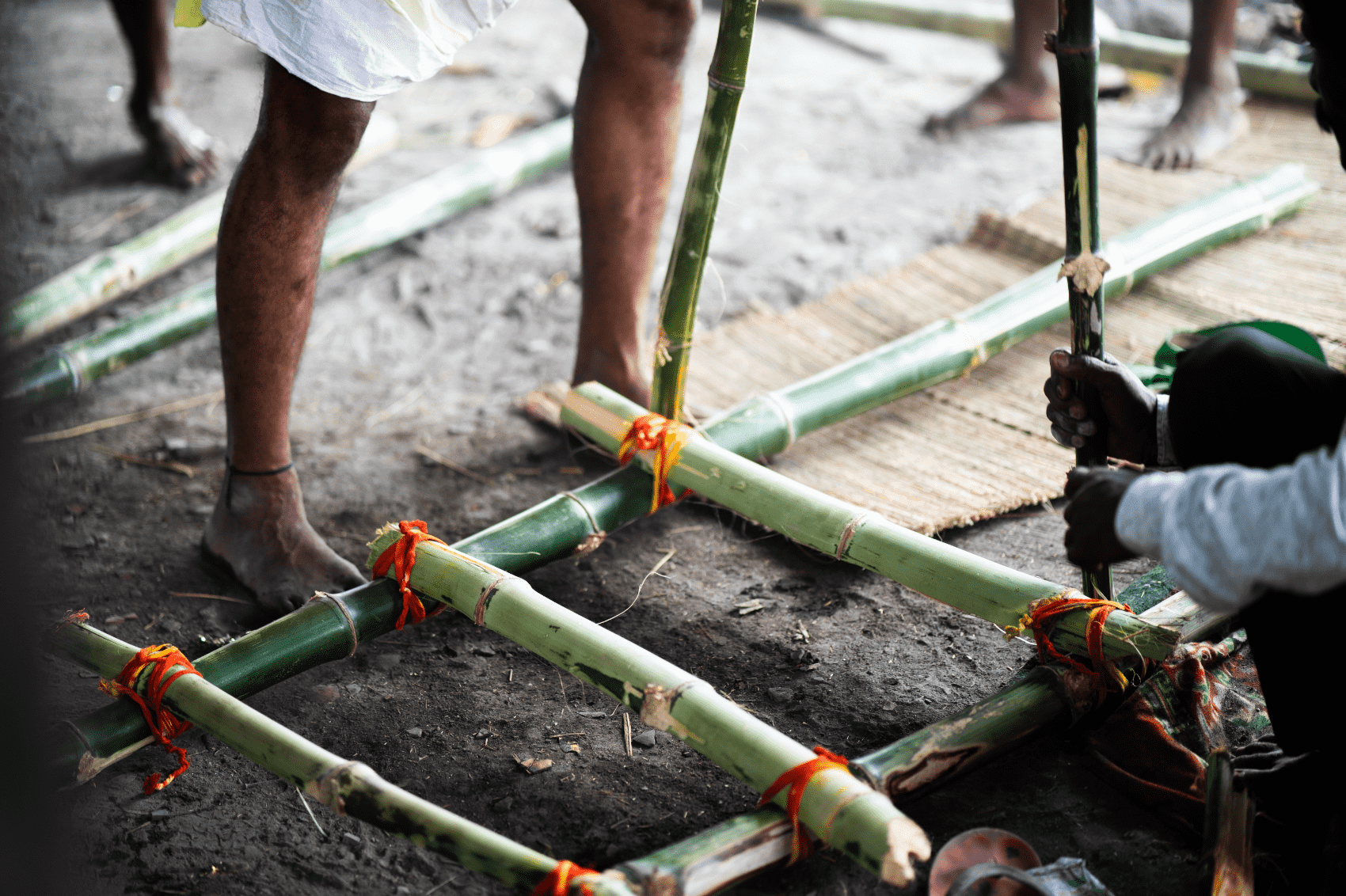
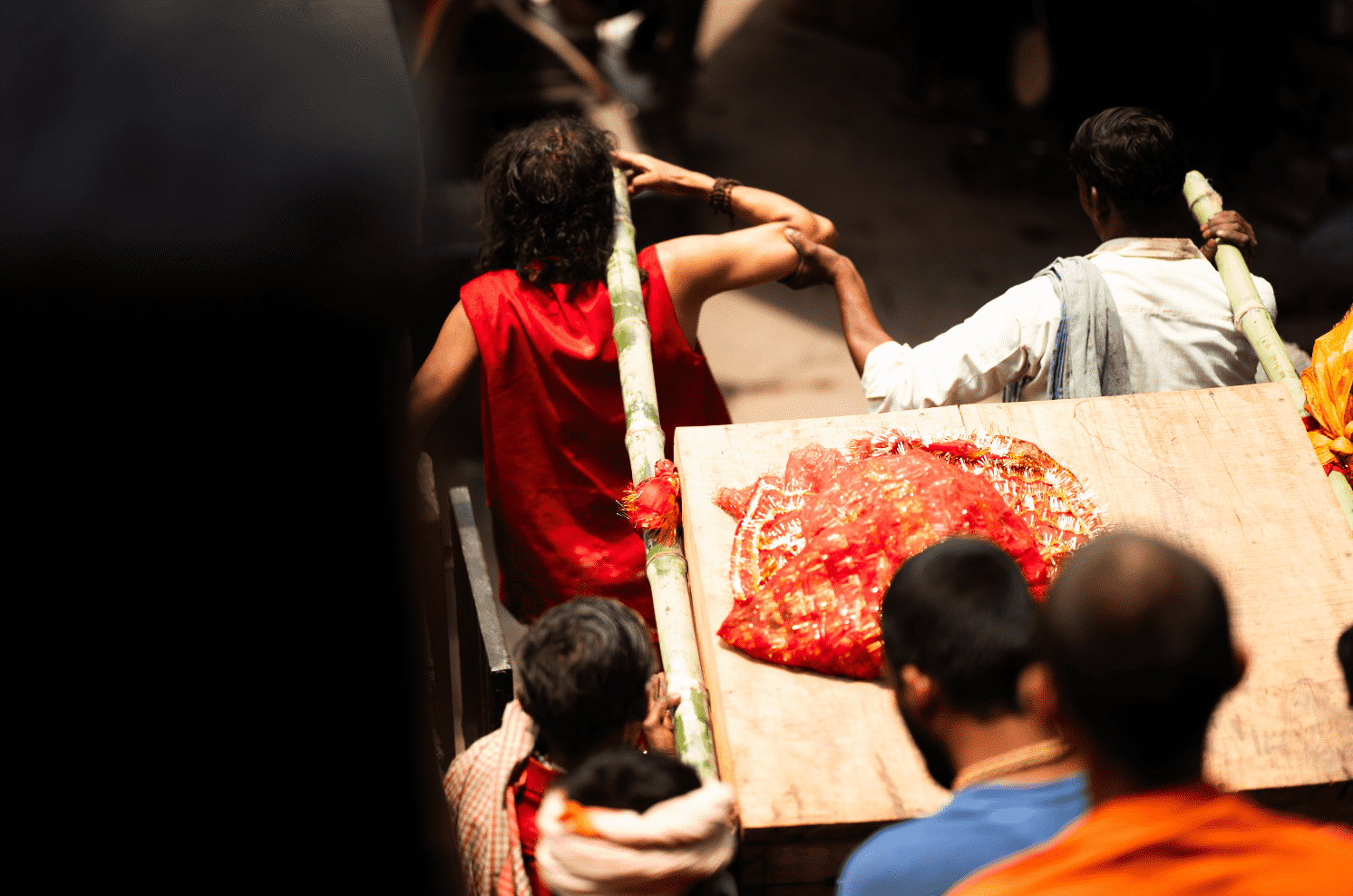
He then gets carried to the river by a large group of people
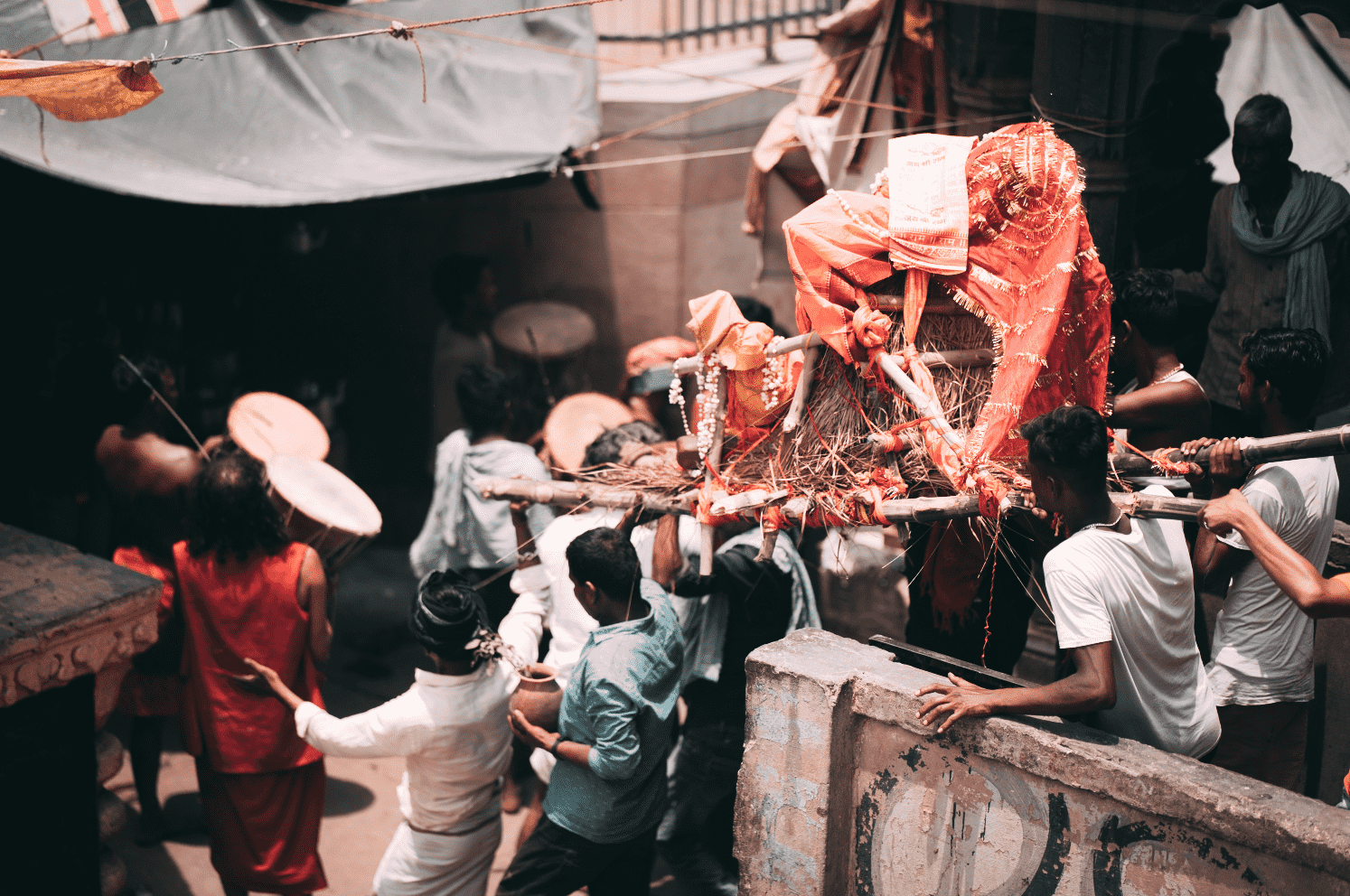
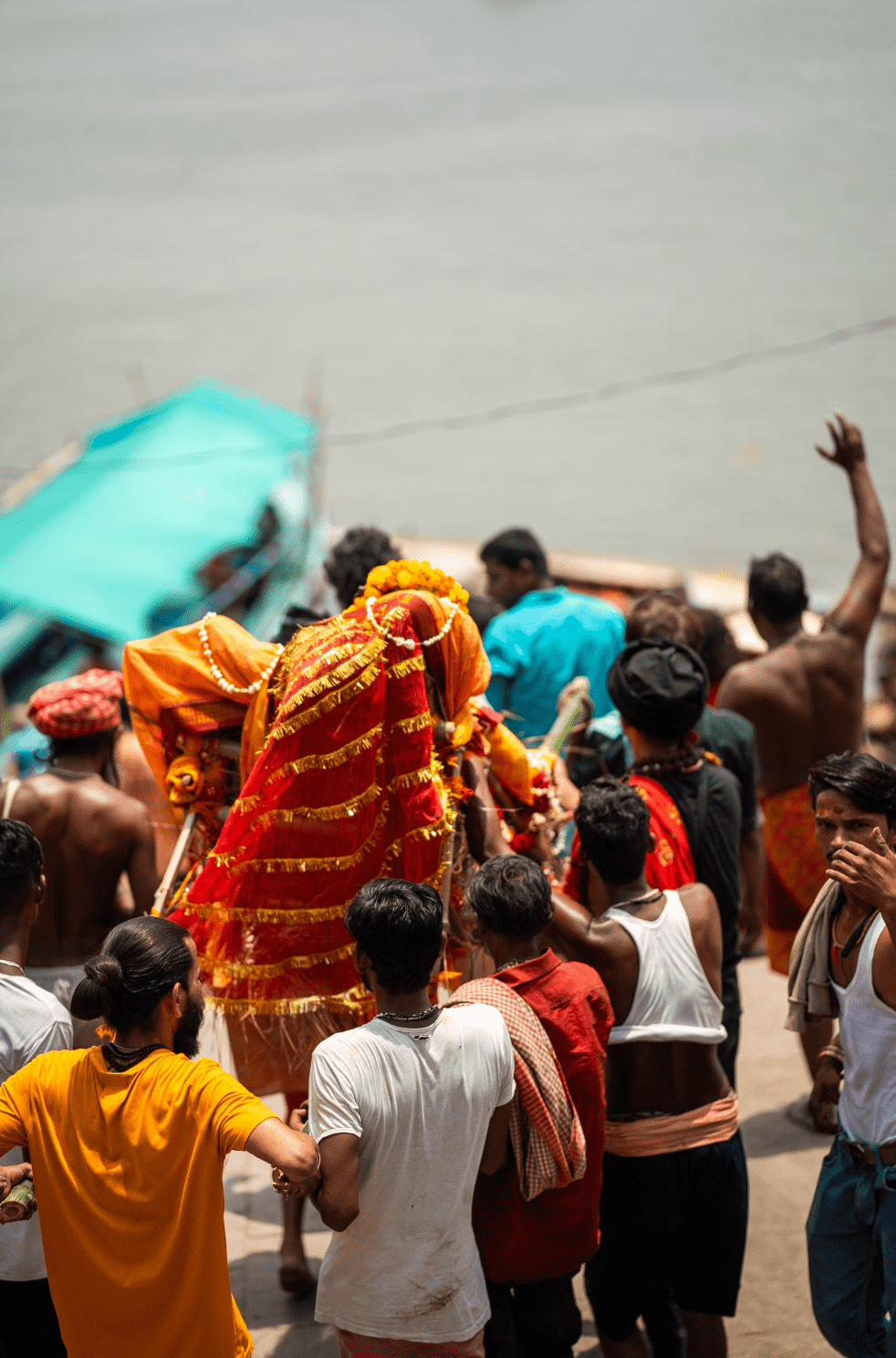
On the boat, more rituals happen before he is put into a couffin with the sand bags and dumped into the river
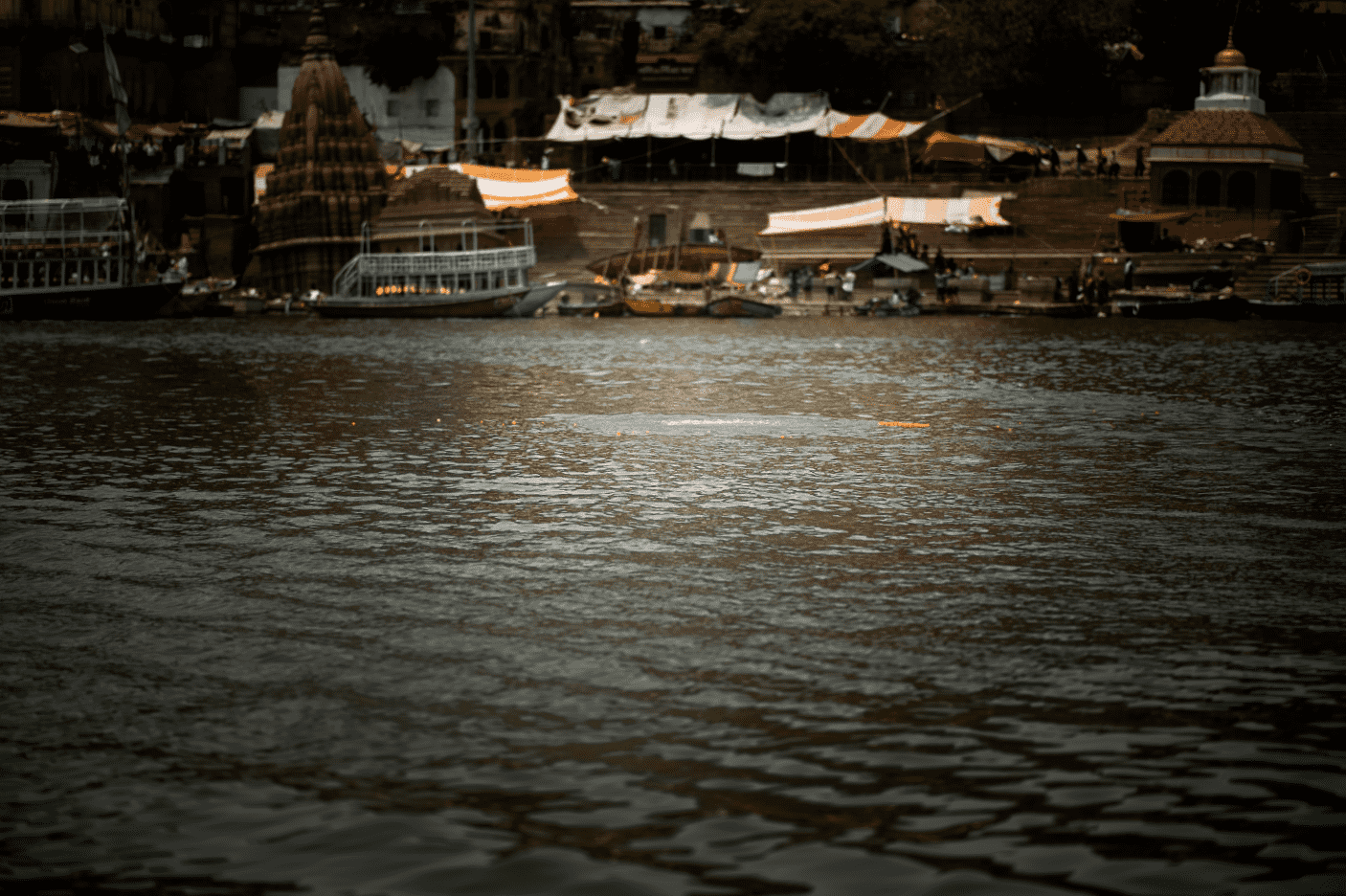
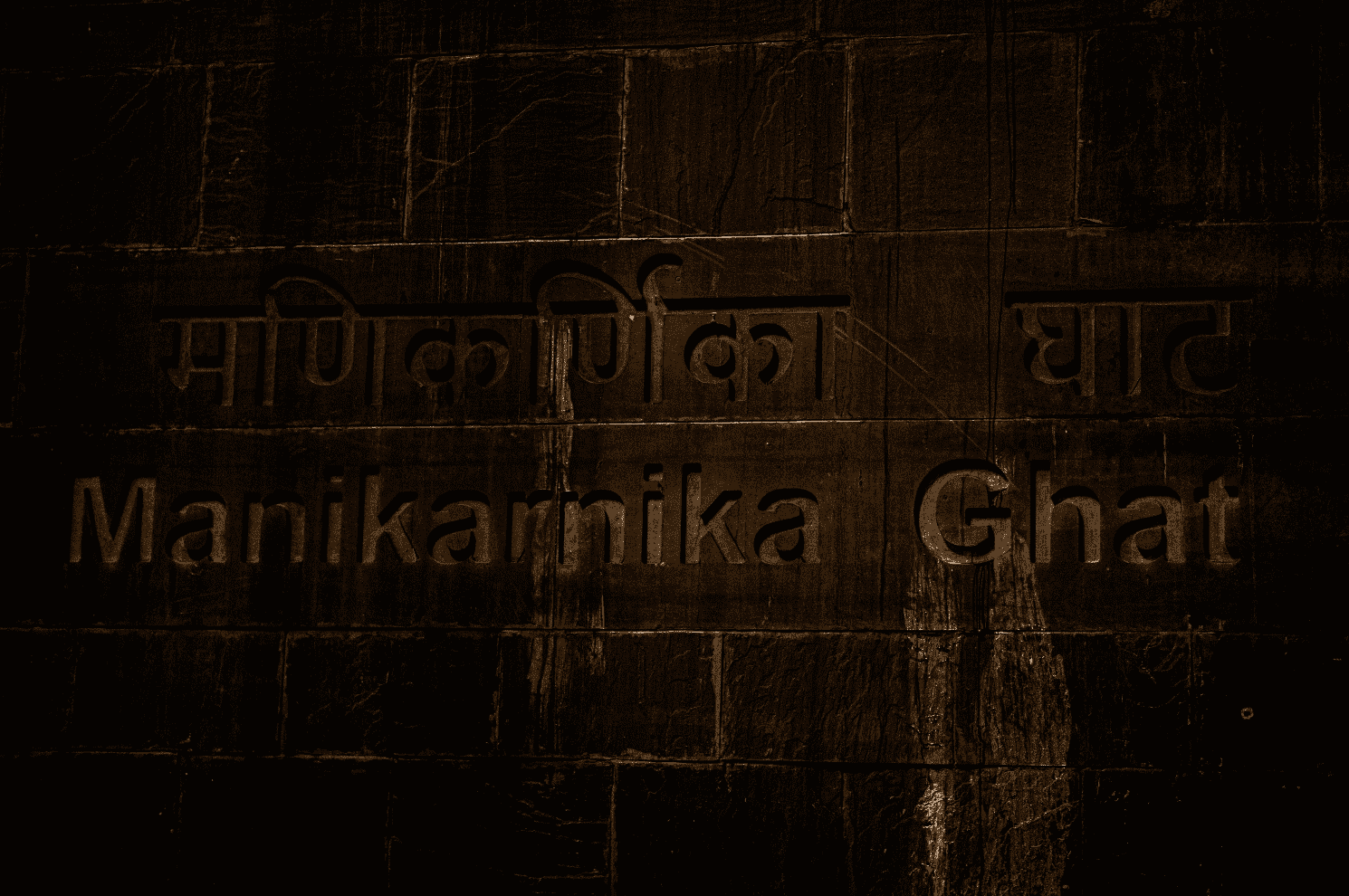
The life and death of the Aghori's themselves is covered in the third article